Laura Garcia Karras
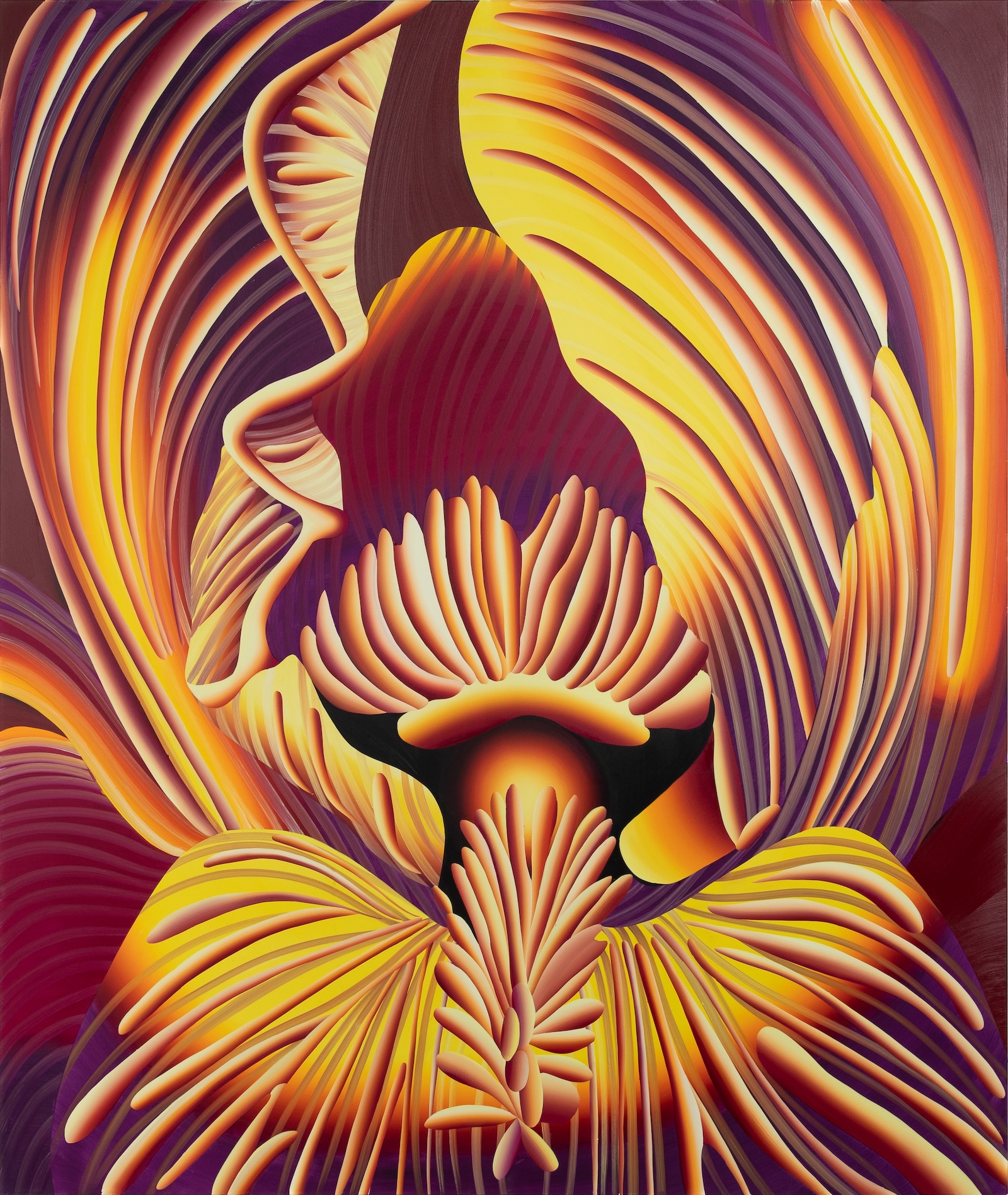
166 x 140 cm
Signed and dated at the back
The sequence of works in the exhibition is inspired by Derek Jarman's garden, whose flowers are grown on toxic soil near a nuclear power station. Laura Garcia Karras focuses on these atomic plants, transforming them into wild, almost devouring flowers. In this way, she combines a perfect aesthetic that refers to the canons of antique beauty with an almost abstract madness, creating a sensational and vertiginous painting. With an inner volcanic power, the artist plays with relationships of scale and artificial light. In this way, she redefines the boundary between artifice and reality, creating an explosive ambiguity in the perception of her works. ‘Calisté', translated as ‘the most beautiful' in Greek, evokes the name of the nymph transformed into a constellation by Zeus.
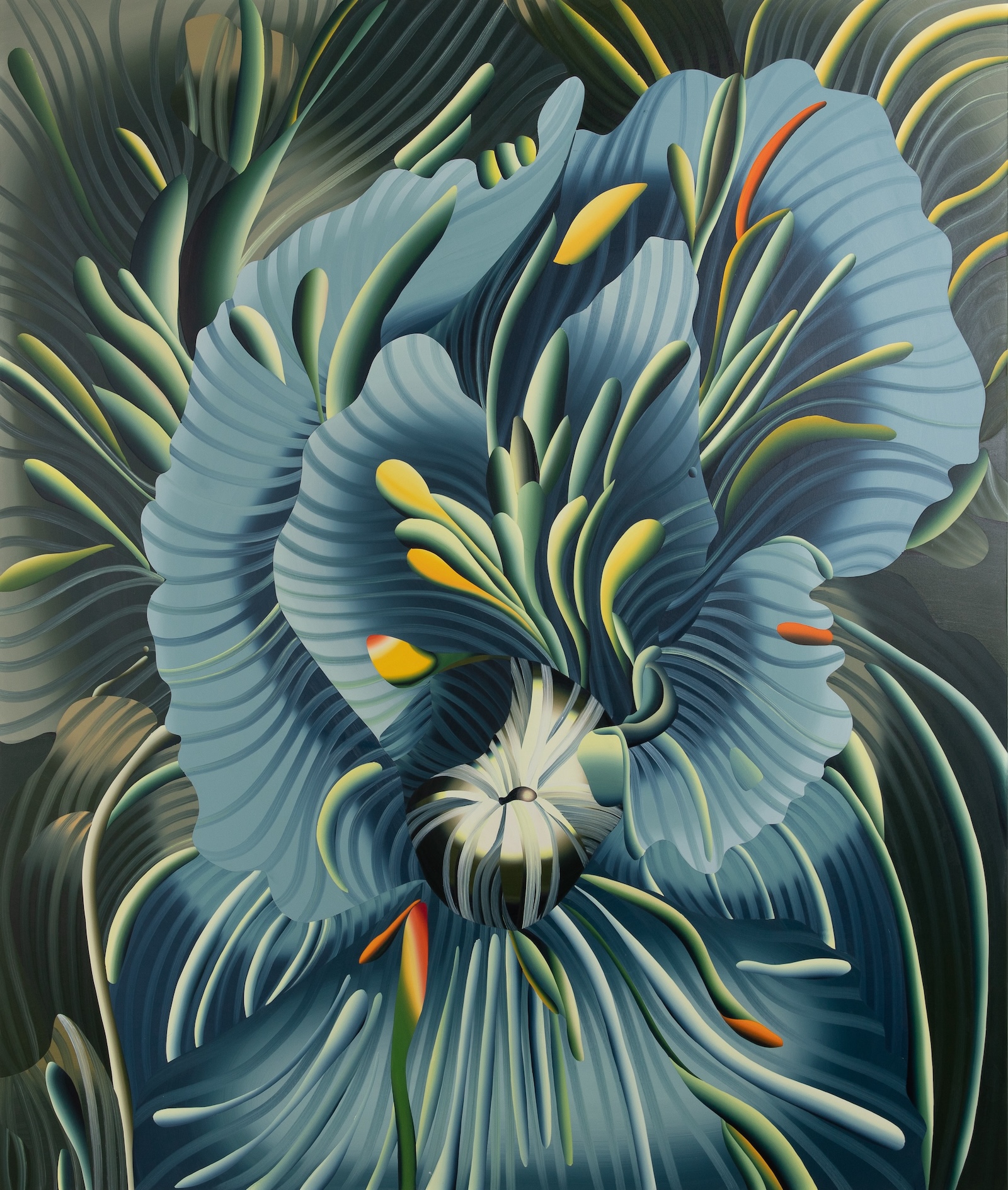
166 x 140 cm
Signed and dated at the back
The sequence of works in the exhibition is inspired by Derek Jarman's garden, whose flowers are grown on toxic soil near a nuclear power station. Laura Garcia Karras focuses on these atomic plants, transforming them into wild, almost devouring flowers. In this way, she combines a perfect aesthetic that refers to the canons of antique beauty with an almost abstract madness, creating a sensational and vertiginous painting. With an inner volcanic power, the artist plays with relationships of scale and artificial light. In this way, she redefines the boundary between artifice and reality, creating an explosive ambiguity in the perception of her works. ‘Calisté', translated as ‘the most beautiful' in Greek, evokes the name of the nymph transformed into a constellation by Zeus. Each of the paintings in the exhibition is named in tribute to a major woman for the artist. Here, ‘Carmen' refers to the storm that hit France in 2017 and to the great ballet created by Roland Petit in 1949.
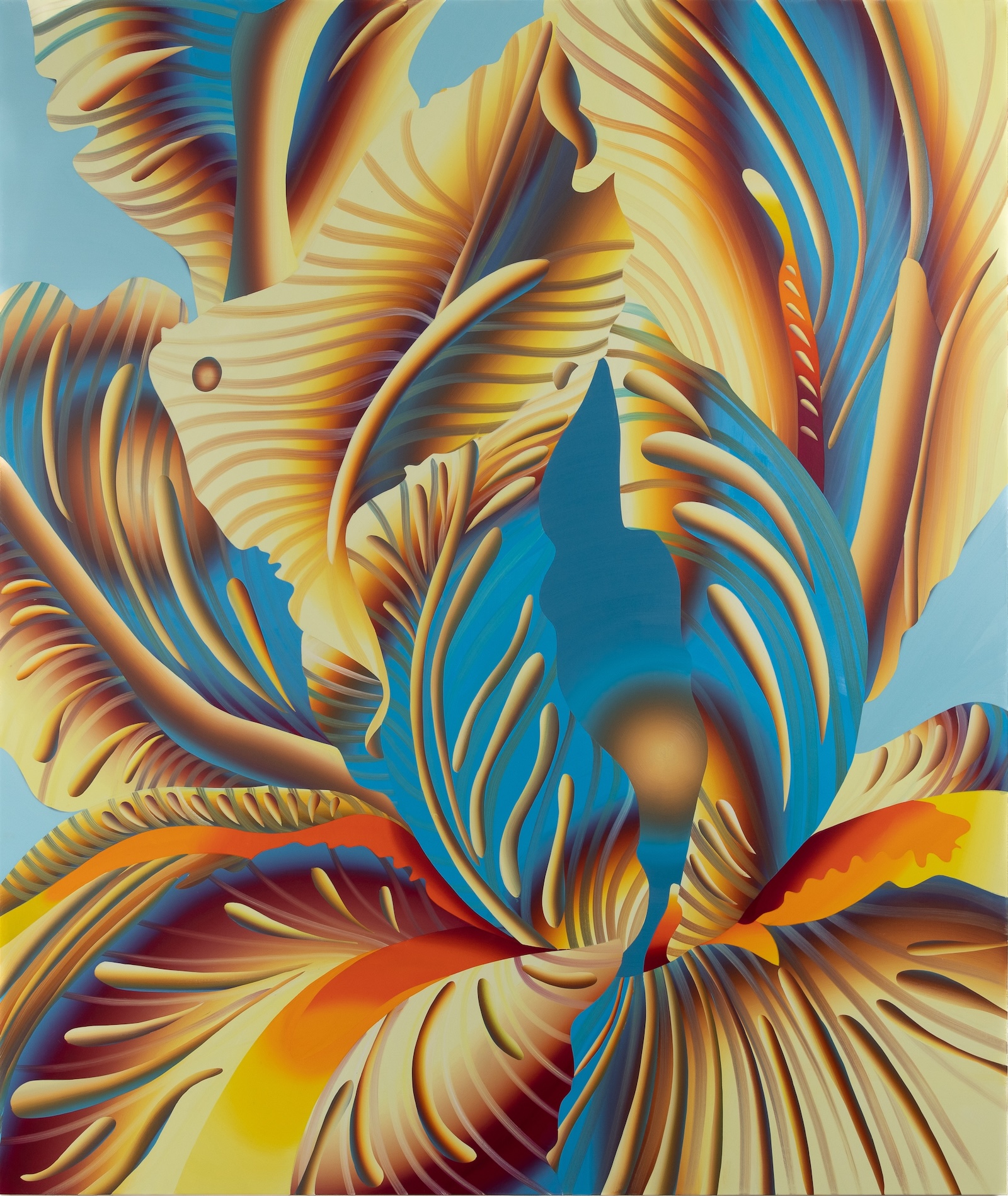
166 x 140 cm
Signed and dated at the back
The sequence of works in the exhibition is inspired by Derek Jarman's garden, whose flowers are grown on toxic soil near a nuclear power station. Laura Garcia Karras focuses on these atomic plants, transforming them into wild, almost devouring flowers. In this way, she combines a perfect aesthetic that refers to the canons of antique beauty with an almost abstract madness, creating a sensational and vertiginous painting. With an inner volcanic power, the artist plays with relationships of scale and artificial light. In this way, she redefines the boundary between artifice and reality, creating an explosive ambiguity in the perception of her works. ‘Calisté', translated as ‘the most beautiful' in Greek, evokes the name of the nymph transformed into a constellation by Zeus. Each of the paintings in the exhibition is named in tribute to a major woman for the artist.
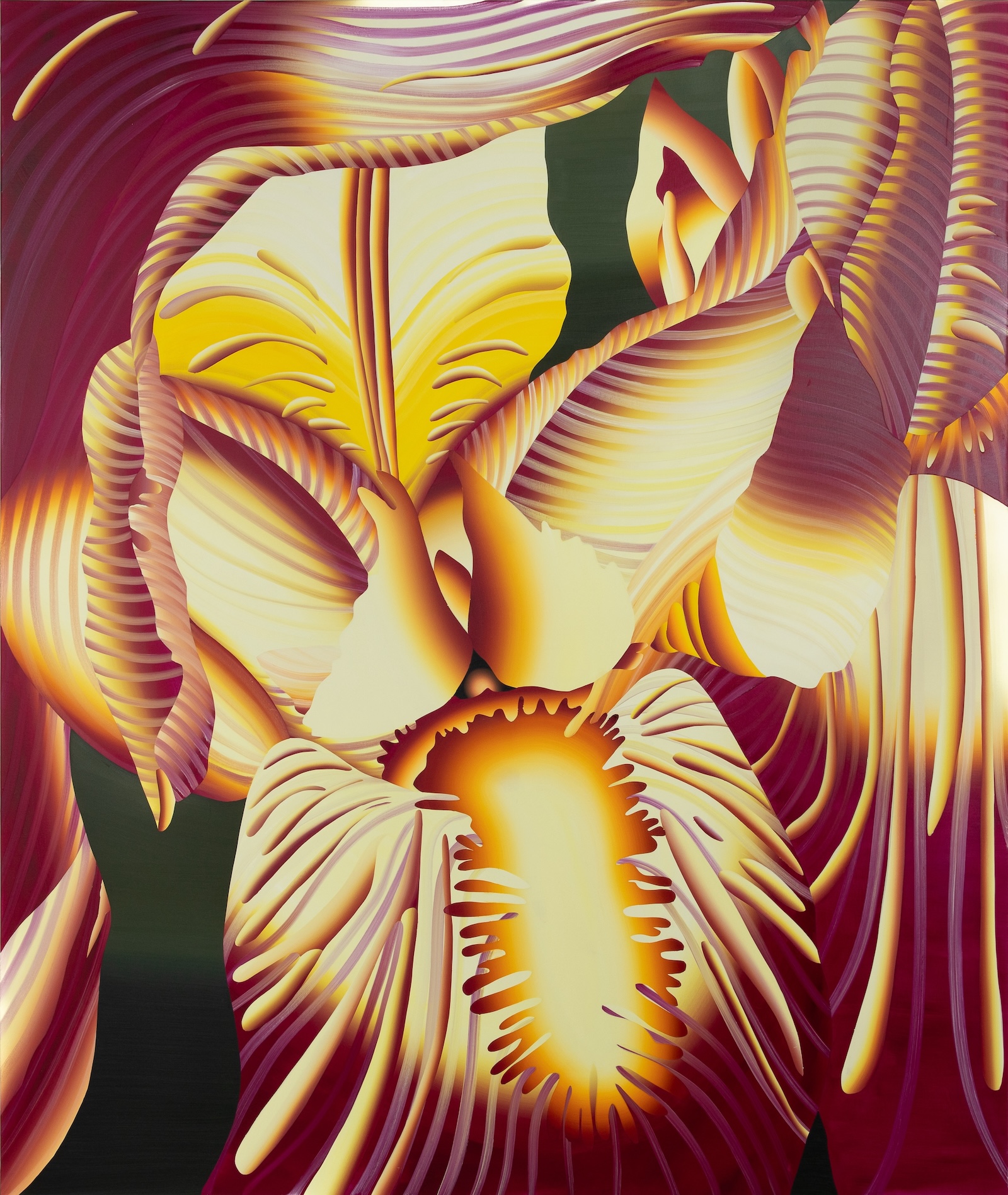
166 x 140 cm
Signed and dated at the back
The sequence of works in the exhibition is inspired by Derek Jarman's garden, whose flowers are grown on toxic soil near a nuclear power station. Laura Garcia Karras focuses on these atomic plants, transforming them into wild, almost devouring flowers. In this way, she combines a perfect aesthetic that refers to the canons of antique beauty with an almost abstract madness, creating a sensational and vertiginous painting. With an inner volcanic power, the artist plays with relationships of scale and artificial light. In this way, she redefines the boundary between artifice and reality, creating an explosive ambiguity in the perception of her works. ‘Calisté', translated as ‘the most beautiful' in Greek, evokes the name of the nymph transformed into a constellation by Zeus.Each of the paintings in the exhibition is named in tribute to a major woman for the artist. Here ‘Mae J.' refers to Mae Jemison, the first African-American woman astronaut to go into space in 1992.
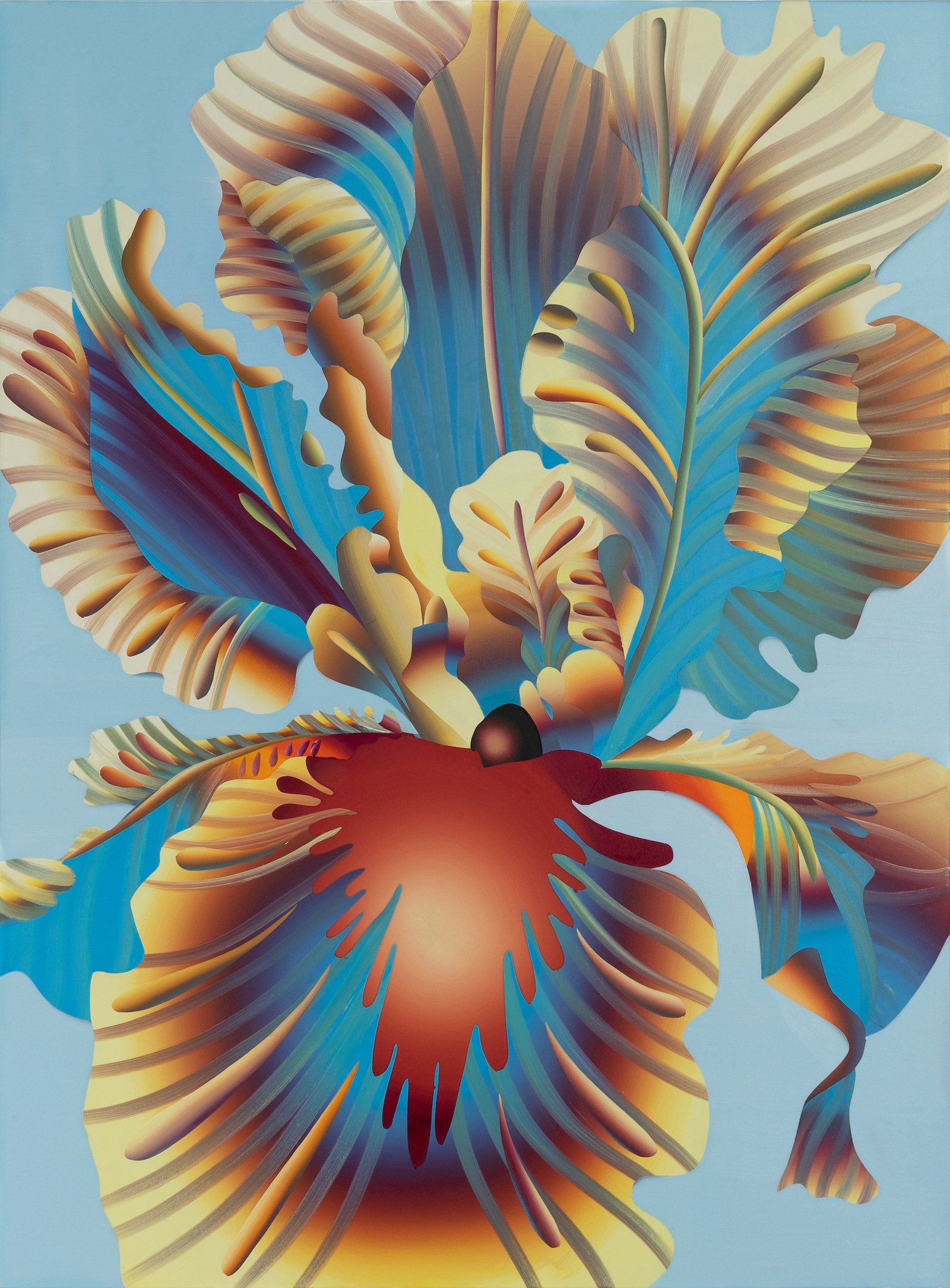
92 x 68 cm
Signed and dated at the back
The sequence of works in the exhibition is inspired by Derek Jarman's garden, whose flowers are grown on toxic soil near a nuclear power station. Laura Garcia Karras focuses on these atomic plants, transforming them into wild, almost devouring flowers. In this way, she combines a perfect aesthetic that refers to the canons of antique beauty with an almost abstract madness, creating a sensational and vertiginous painting. With an inner volcanic power, the artist plays with relationships of scale and artificial light. In this way, she redefines the boundary between artifice and reality, creating an explosive ambiguity in the perception of her works. ‘Calisté', translated as ‘the most beautiful' in Greek, evokes the name of the nymph transformed into a constellation by Zeus. Each of the paintings in the exhibition is named in tribute to a major woman for the artist.
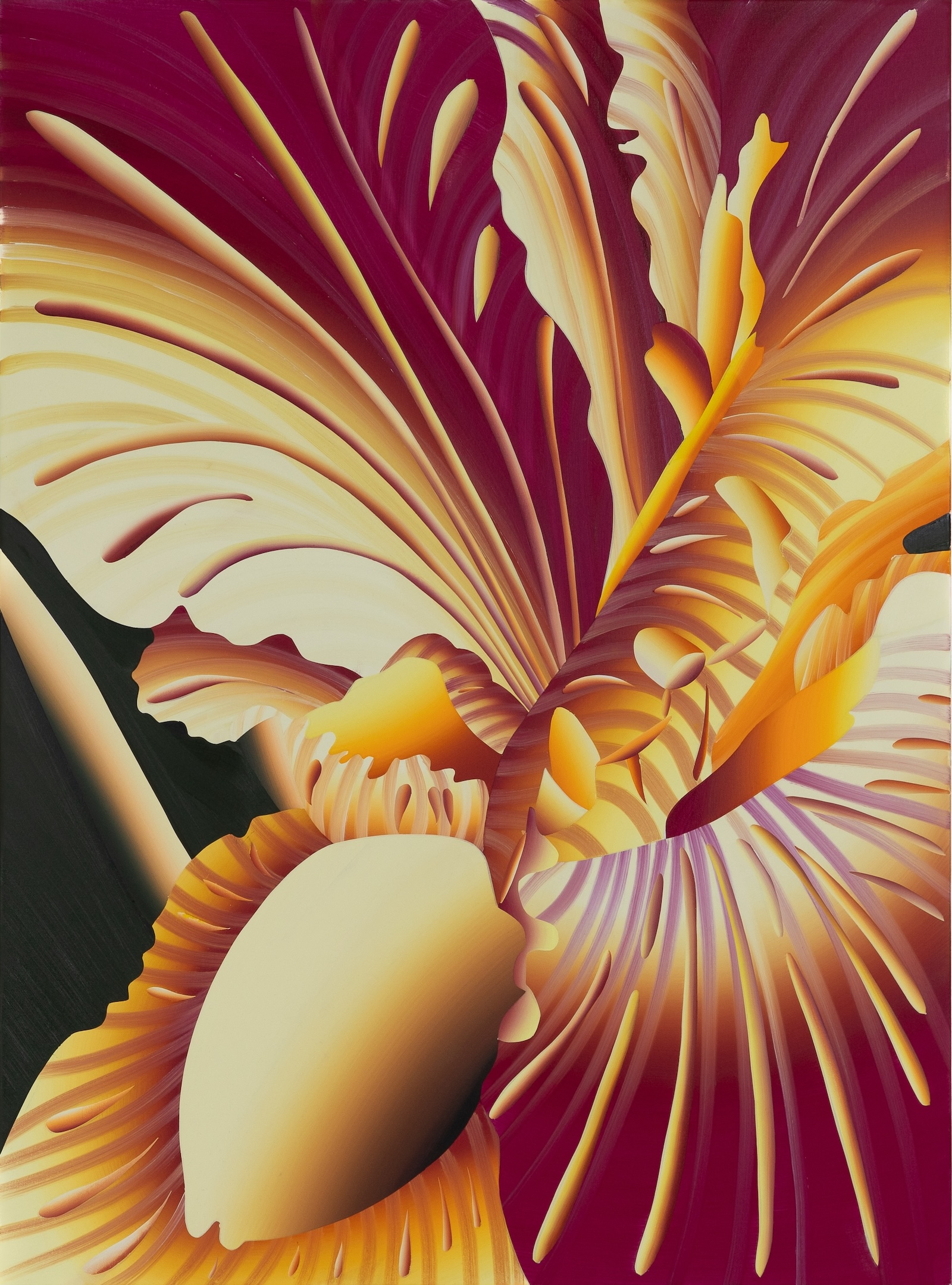
92 x 68 cm
Signed and dated at the back
The sequence of works in the exhibition is inspired by Derek Jarman's garden, whose flowers are grown on toxic soil near a nuclear power station. Laura Garcia Karras focuses on these atomic plants, transforming them into wild, almost devouring flowers. In this way, she combines a perfect aesthetic that refers to the canons of antique beauty with an almost abstract madness, creating a sensational and vertiginous painting. With an inner volcanic power, the artist plays with relationships of scale and artificial light. In this way, she redefines the boundary between artifice and reality, creating an explosive ambiguity in the perception of her works. ‘Calisté', translated as ‘the most beautiful' in Greek, evokes the name of the nymph transformed into a constellation by Zeus. Each of the paintings in the exhibition is named in tribute to a major woman for the artist.
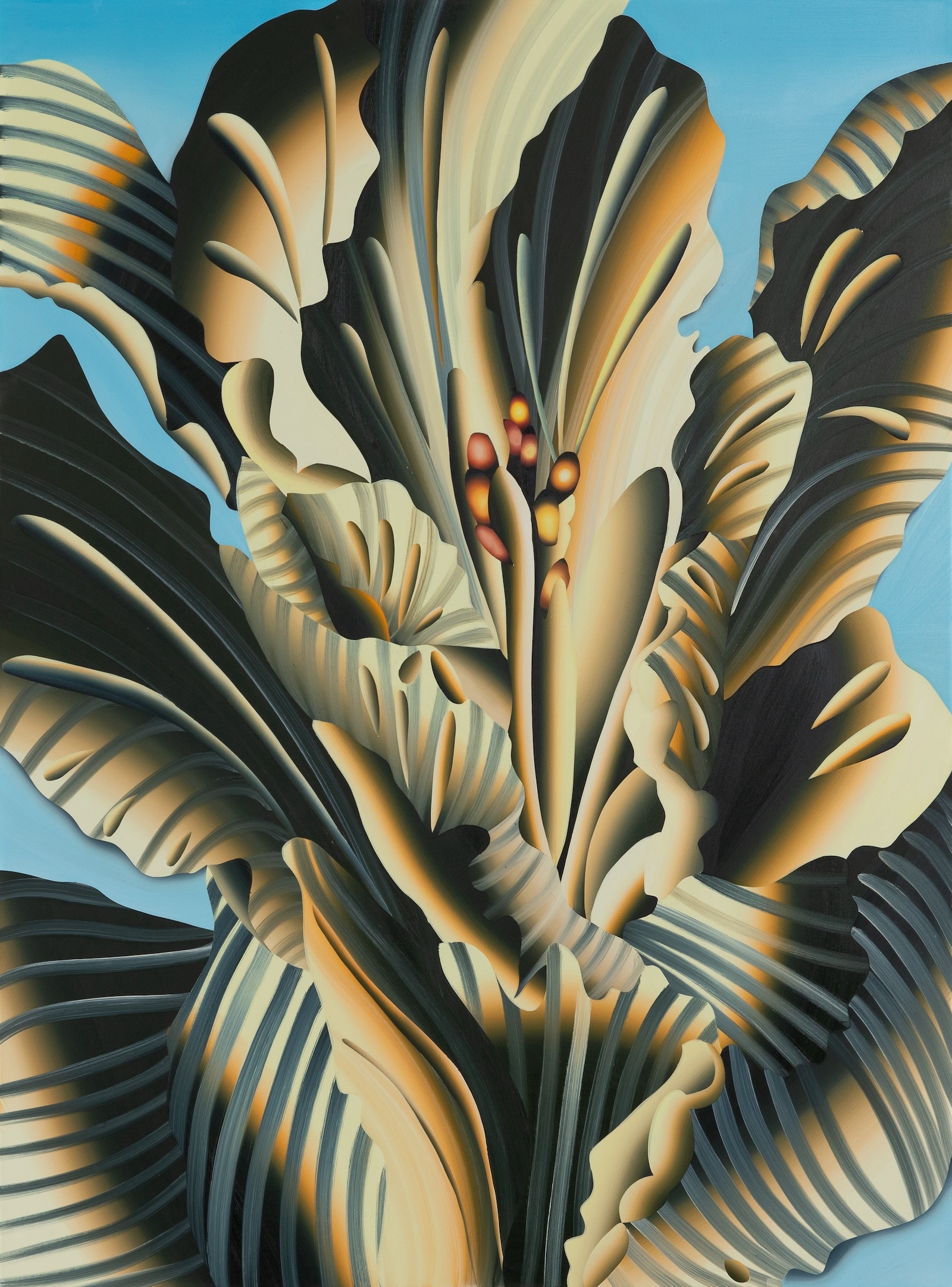
92 x 68 cm
Signed and dated at the back
The sequence of works in the exhibition is inspired by Derek Jarman's garden, whose flowers are grown on toxic soil near a nuclear power station. Laura Garcia Karras focuses on these atomic plants, transforming them into wild, almost devouring flowers. In this way, she combines a perfect aesthetic that refers to the canons of antique beauty with an almost abstract madness, creating a sensational and vertiginous painting. With an inner volcanic power, the artist plays with relationships of scale and artificial light. In this way, she redefines the boundary between artifice and reality, creating an explosive ambiguity in the perception of her works. ‘Calisté', translated as ‘the most beautiful' in Greek, evokes the name of the nymph transformed into a constellation by Zeus. Each of the paintings in the exhibition is named in tribute to a major woman for the artist.
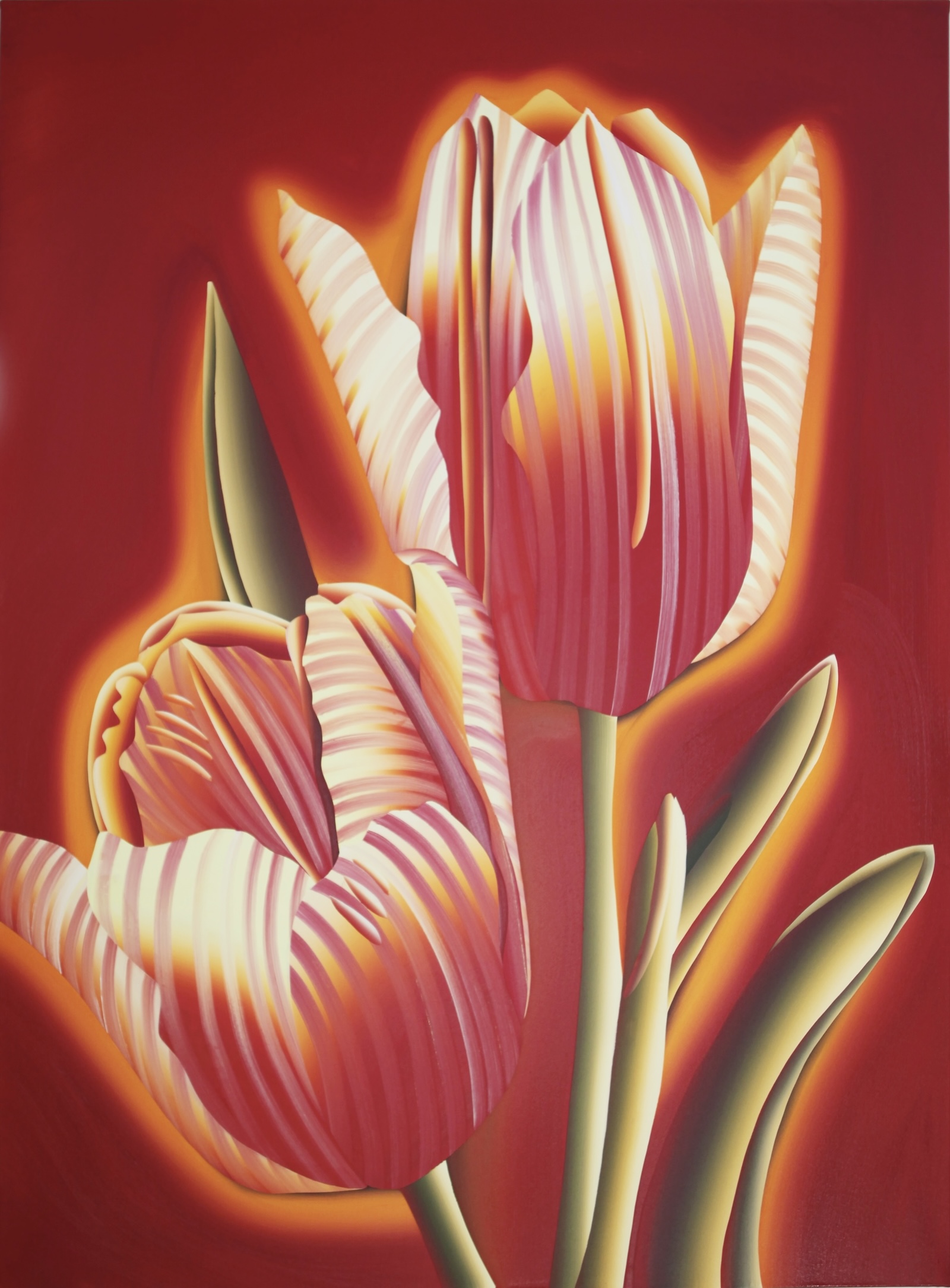
92 x 68 cm
Signed and dated at the back

24 x 19 cm
Signed and dated at the back
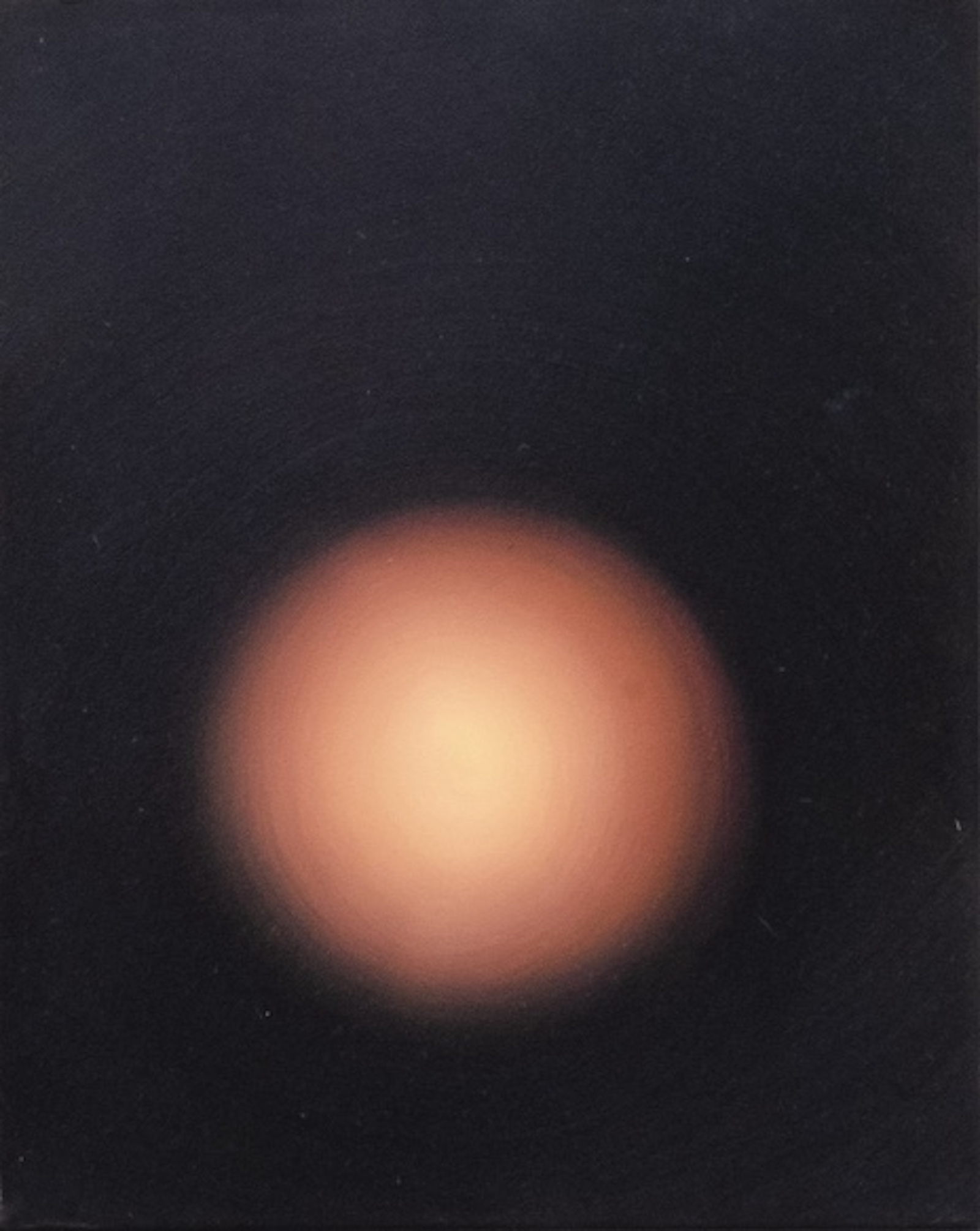
24 x 19 cm
Signed and dated at the back
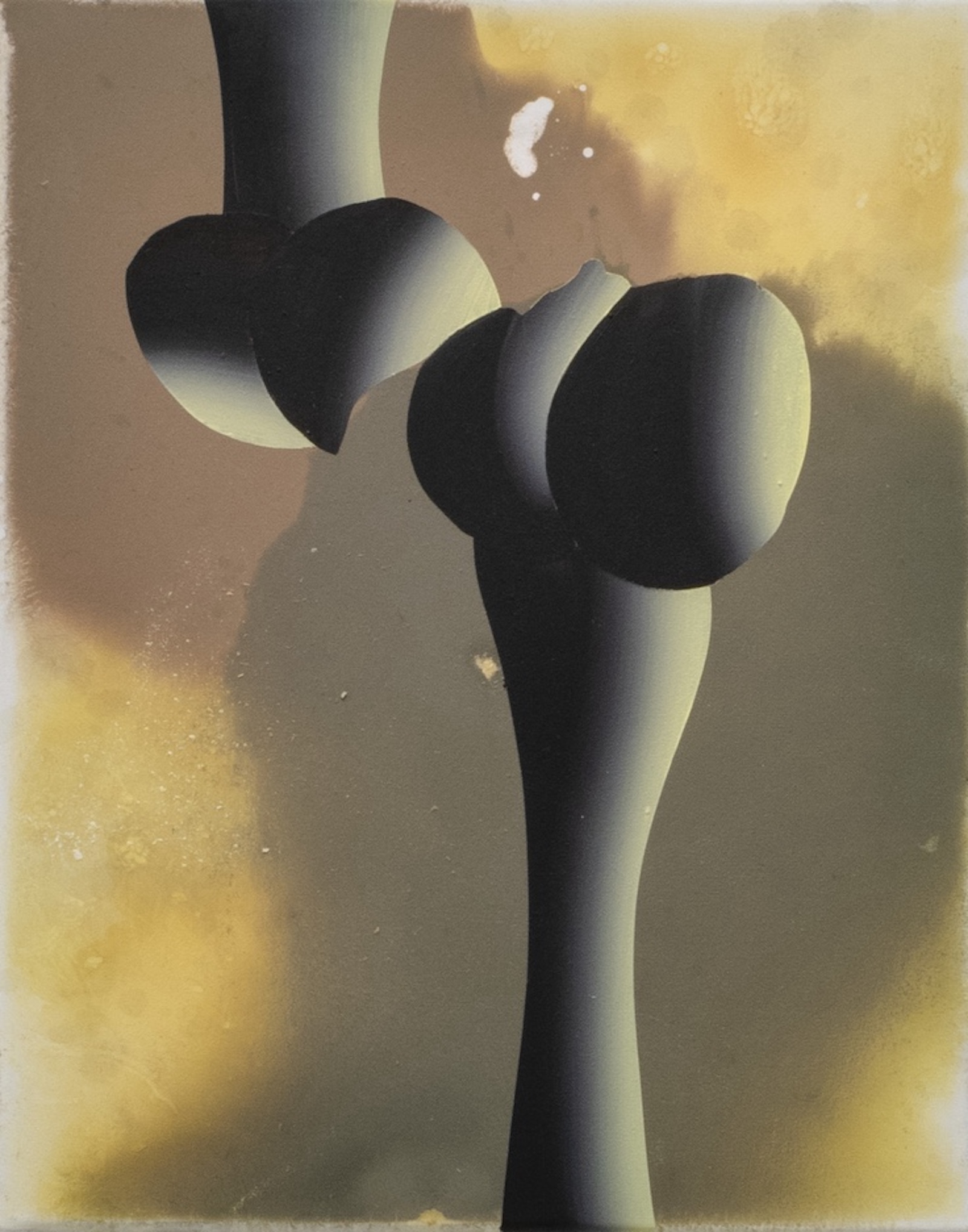
24 x 19 cm
Signed and dated at the back
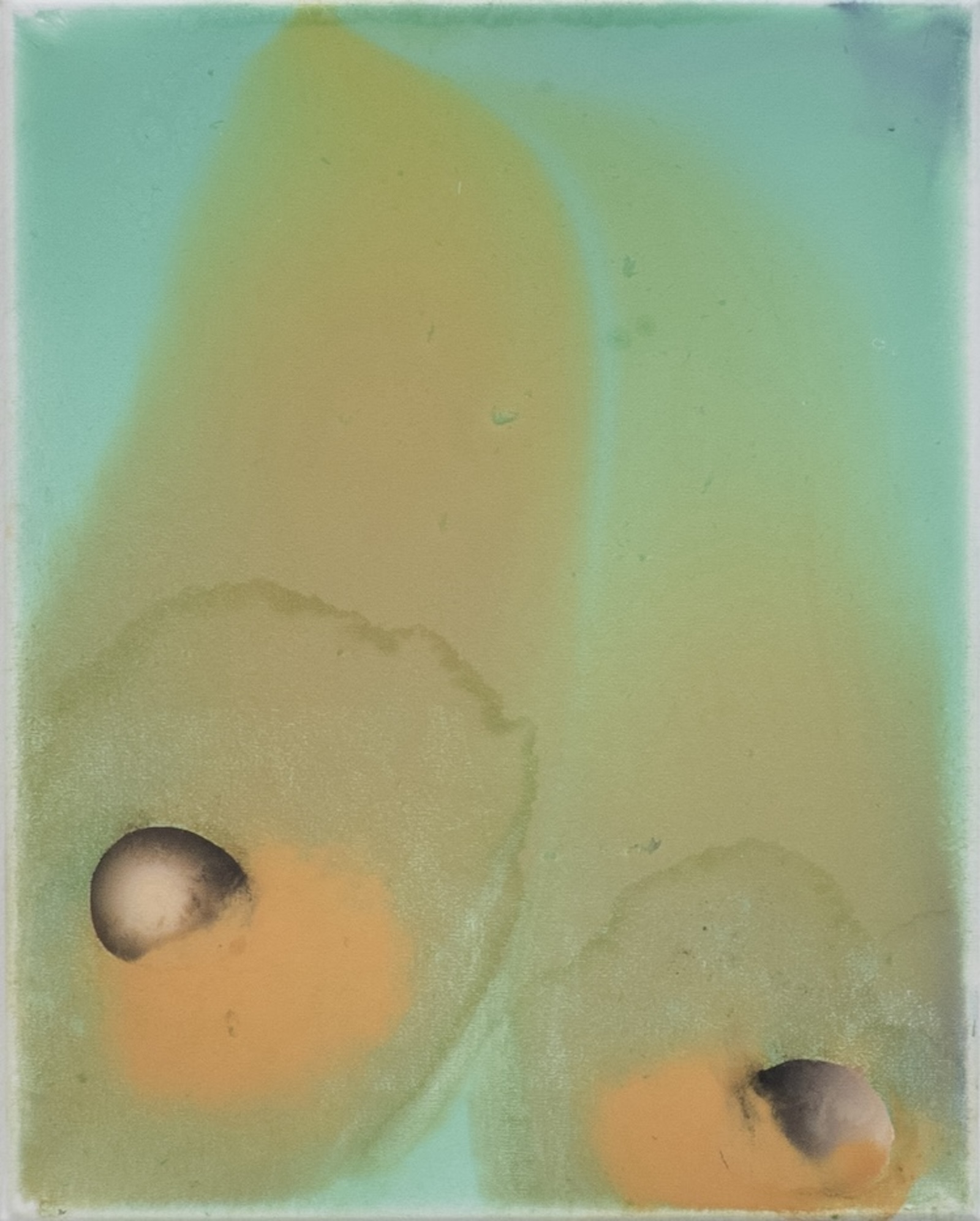
24 x 19 cm
Signed and dated at the back
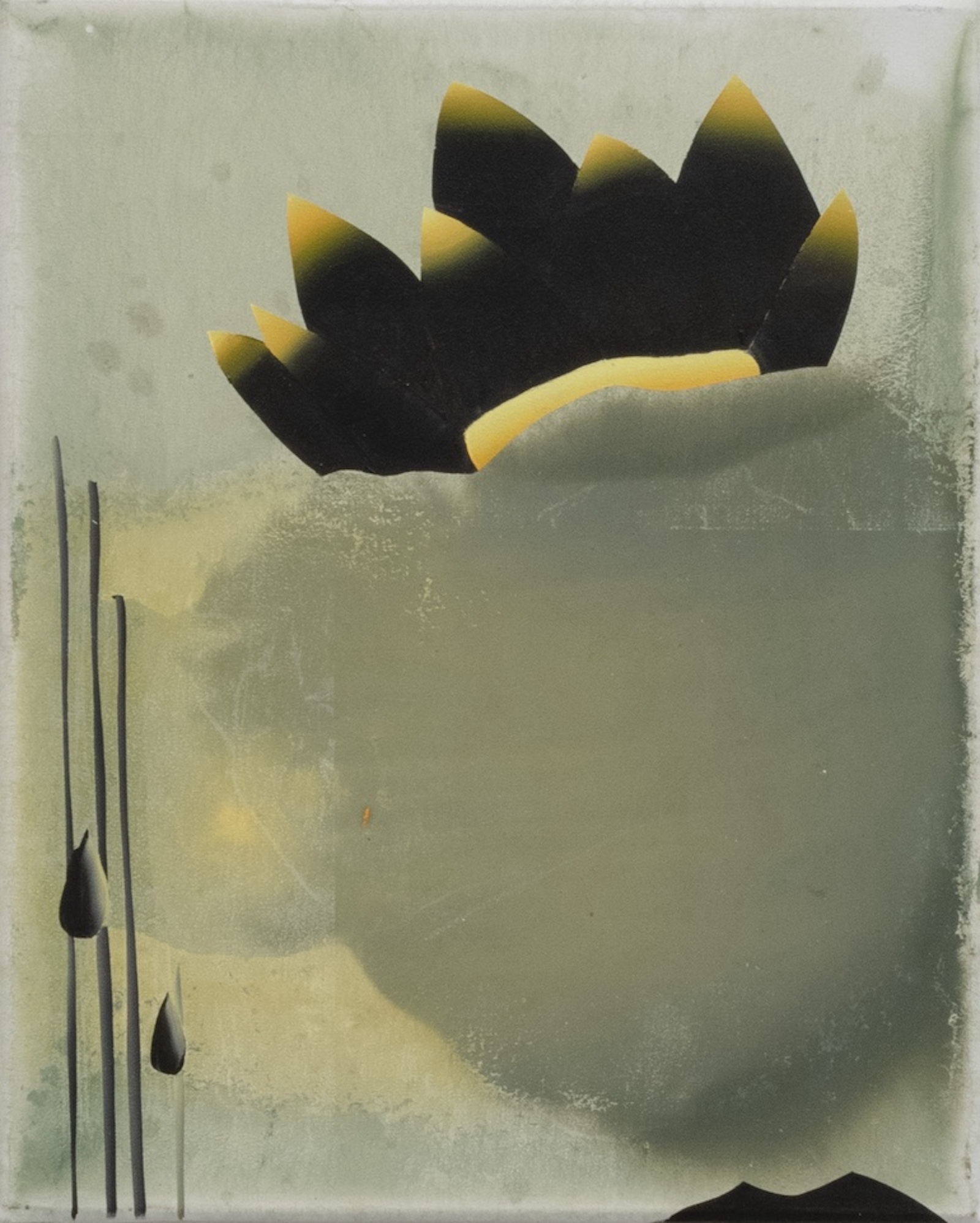
24 x 19 cm
Signed and dated at the back
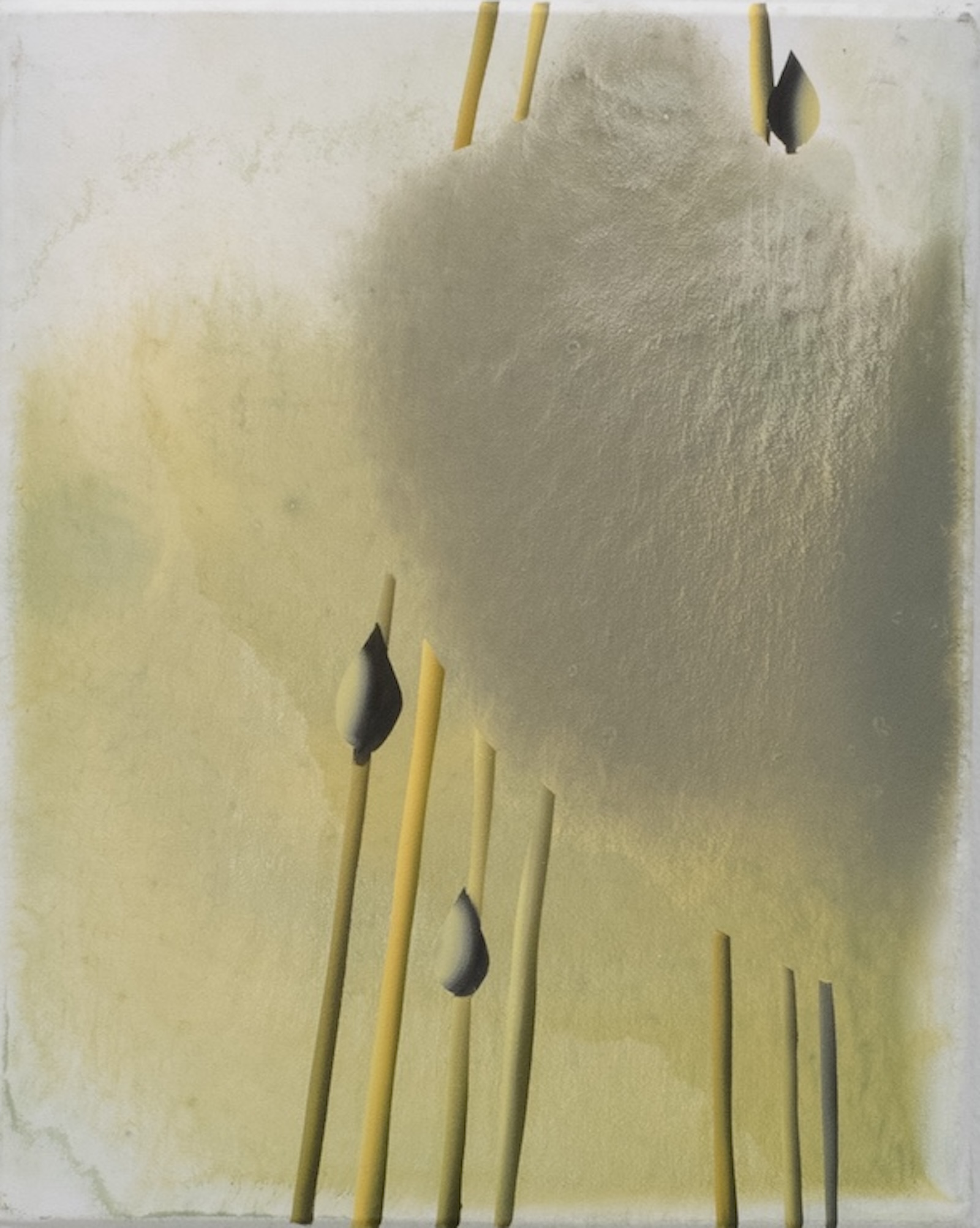
24 x 19 cm
Signed and dated at the back
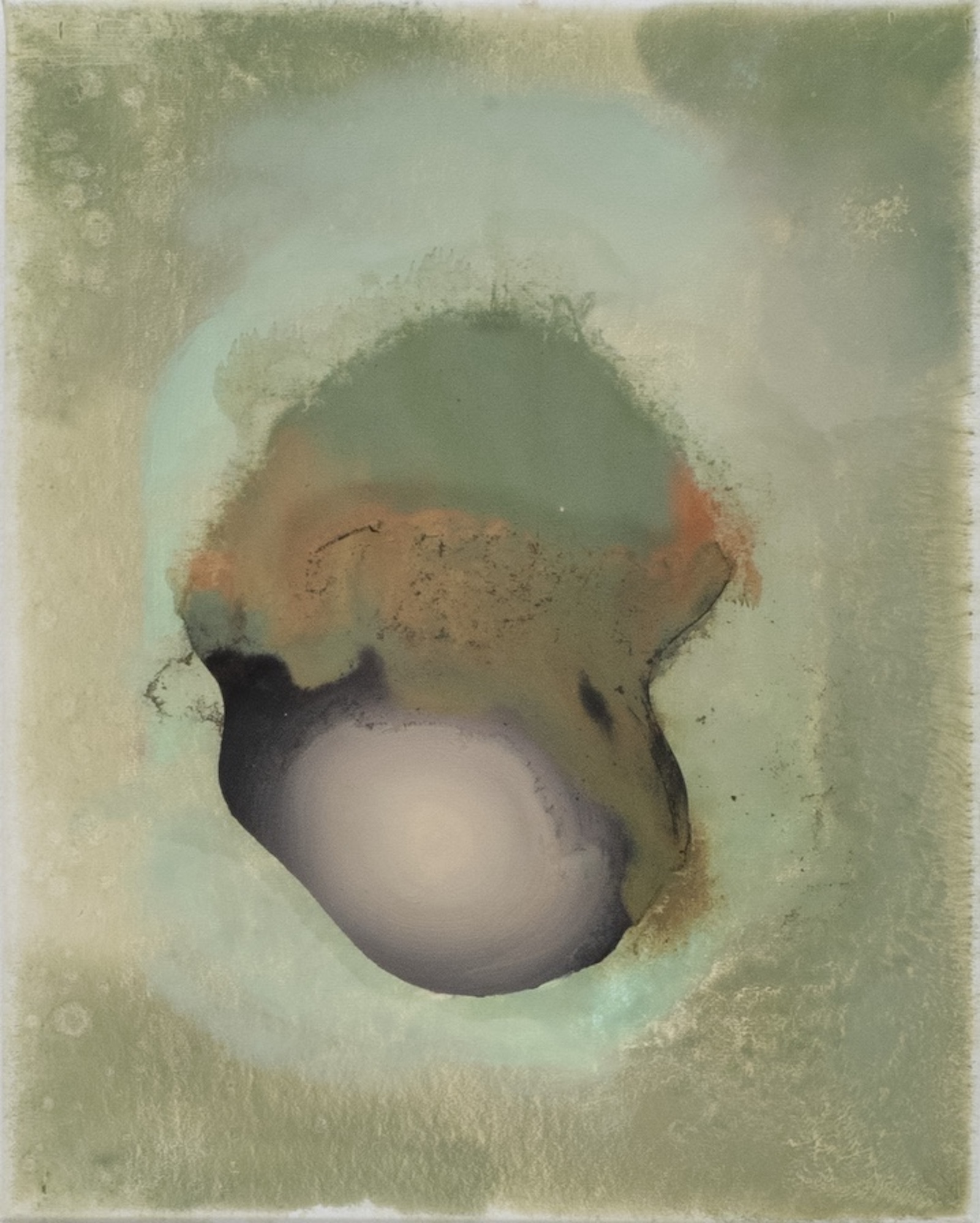
24 x 19 cm
Signed and dated at the back

24 x 19 cm
Signed and dated at the back

24 x 19 cm
Signed and dated at the back
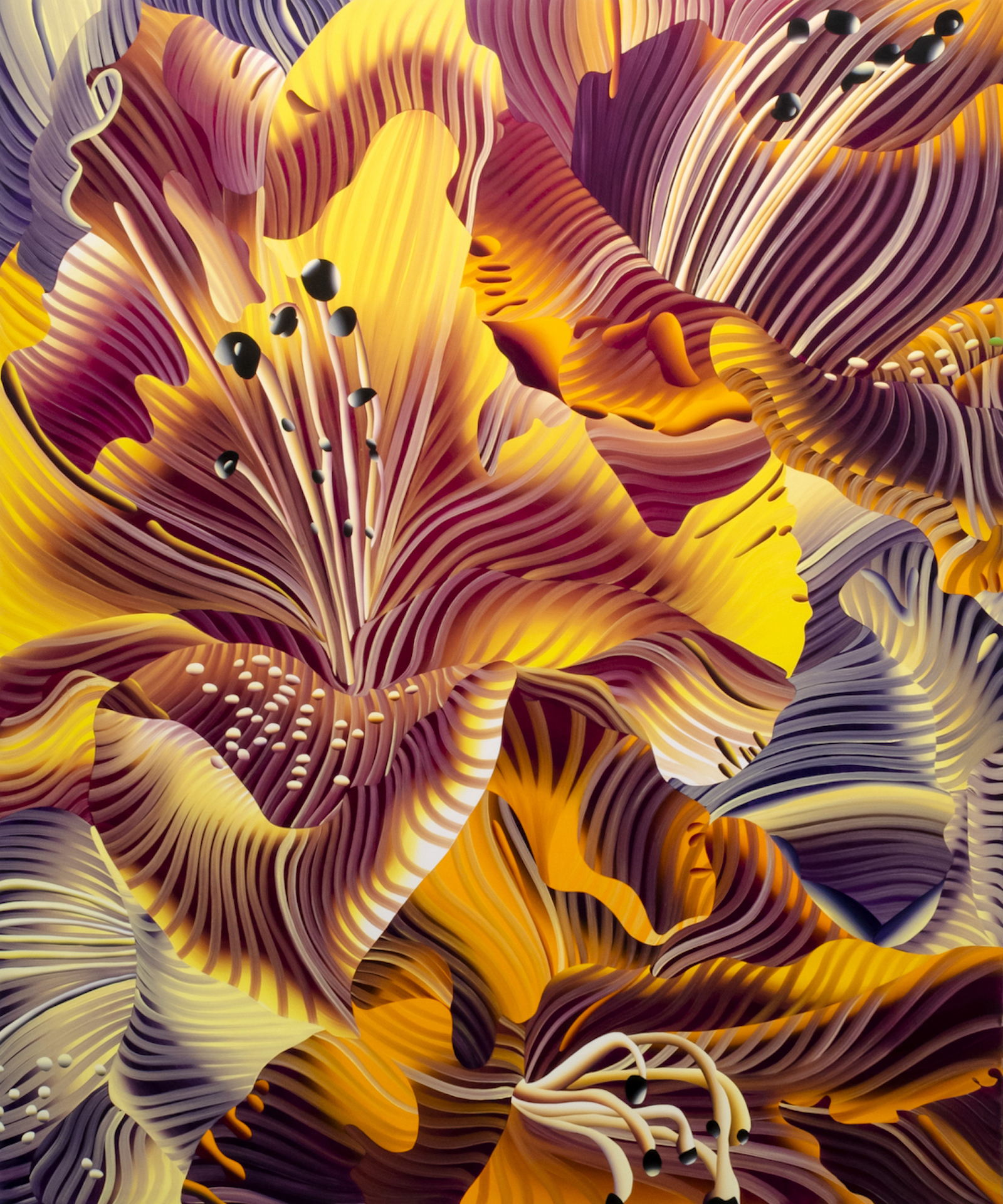
180 x 150 cm
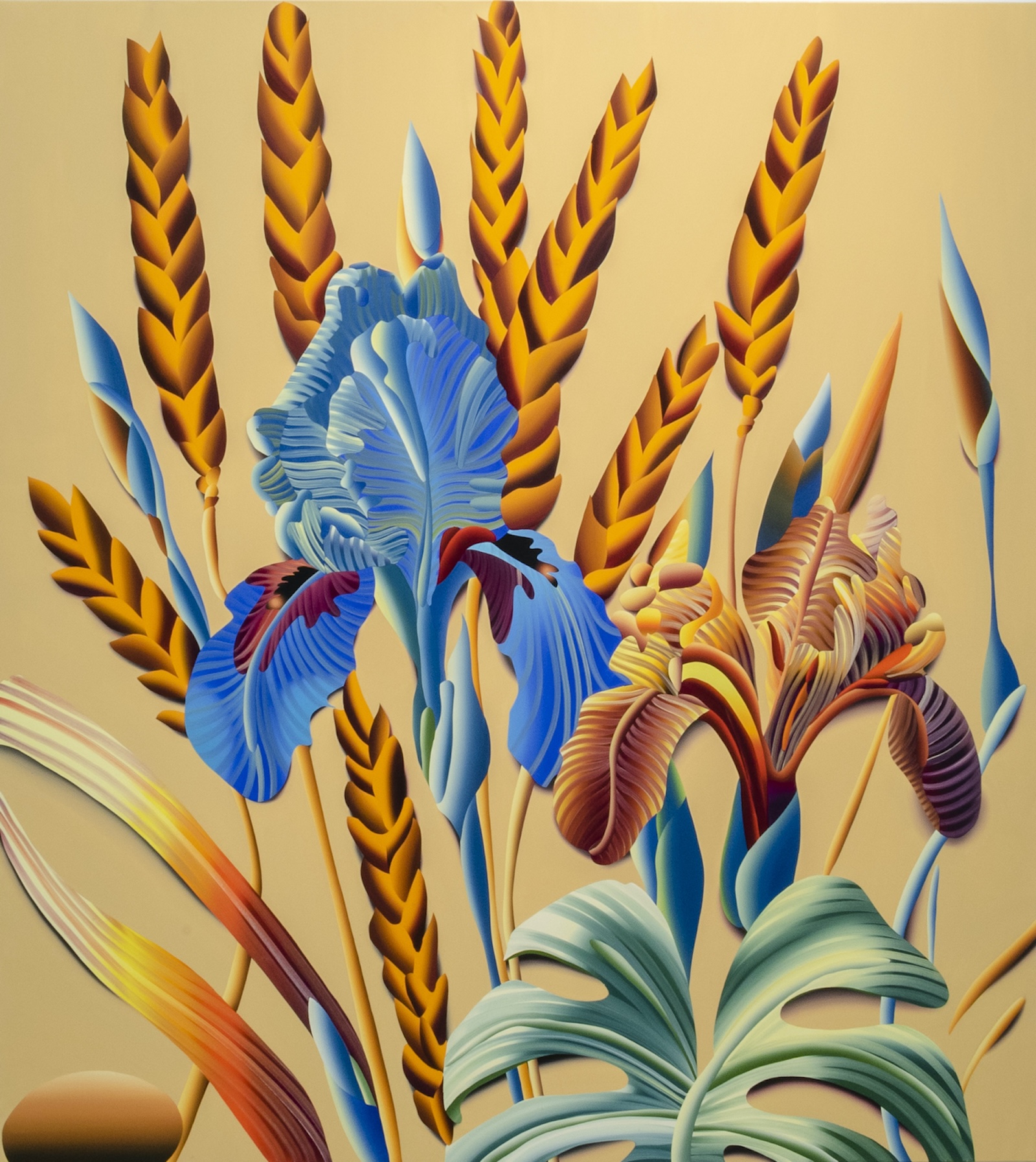
195 x 175 cm
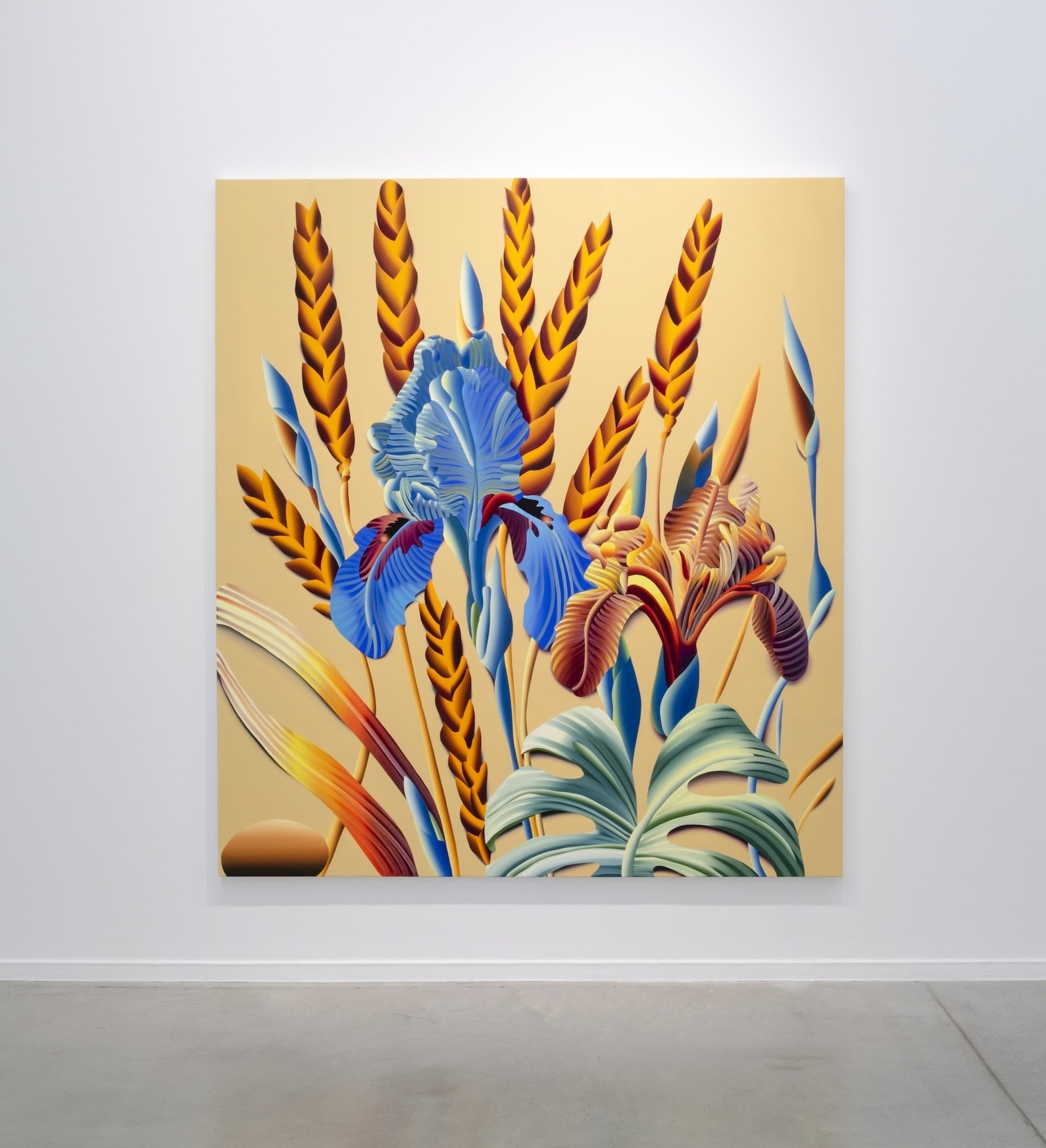
195 x 175 cm
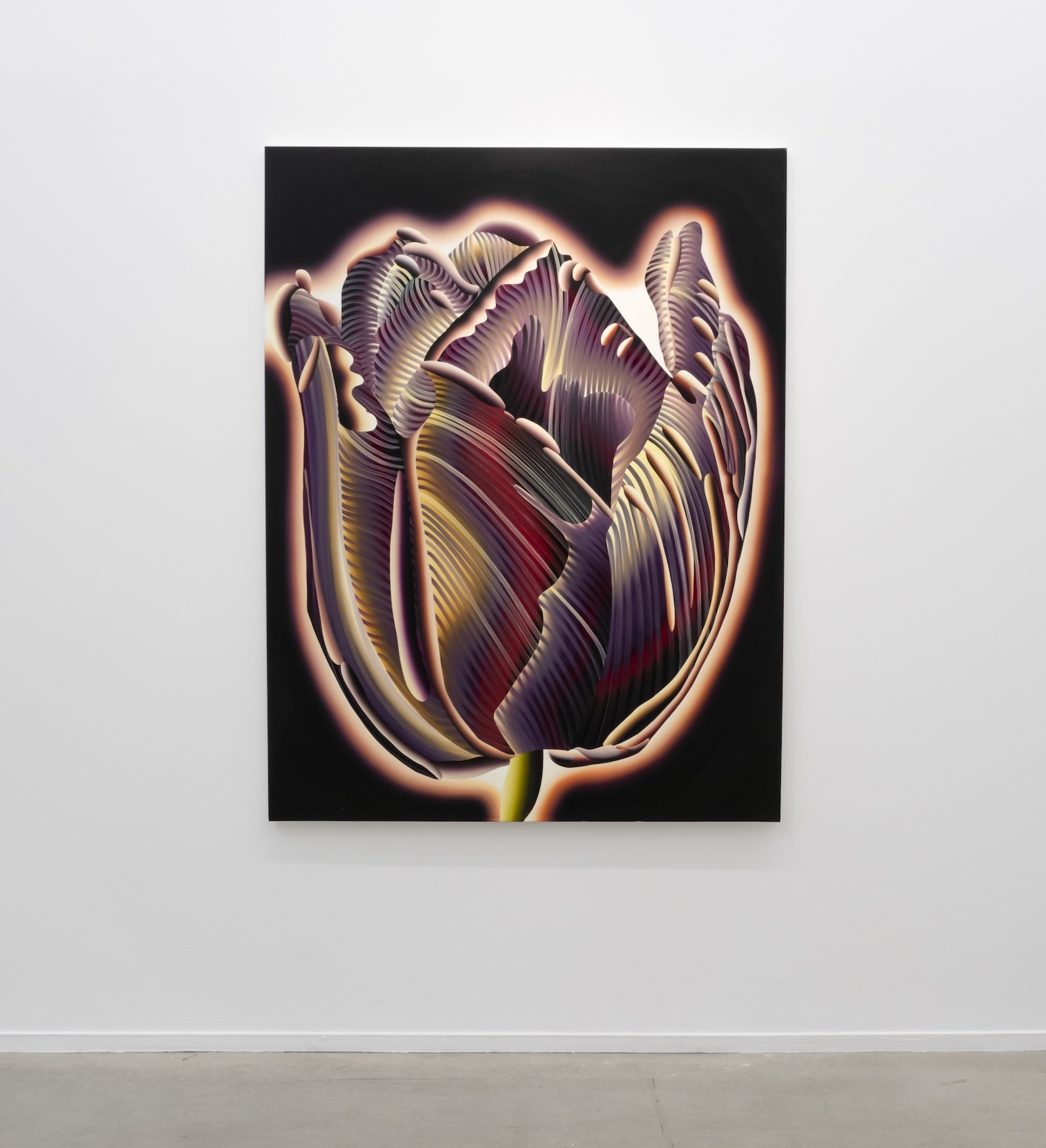
180 x 140 cm

180 x 140 cm
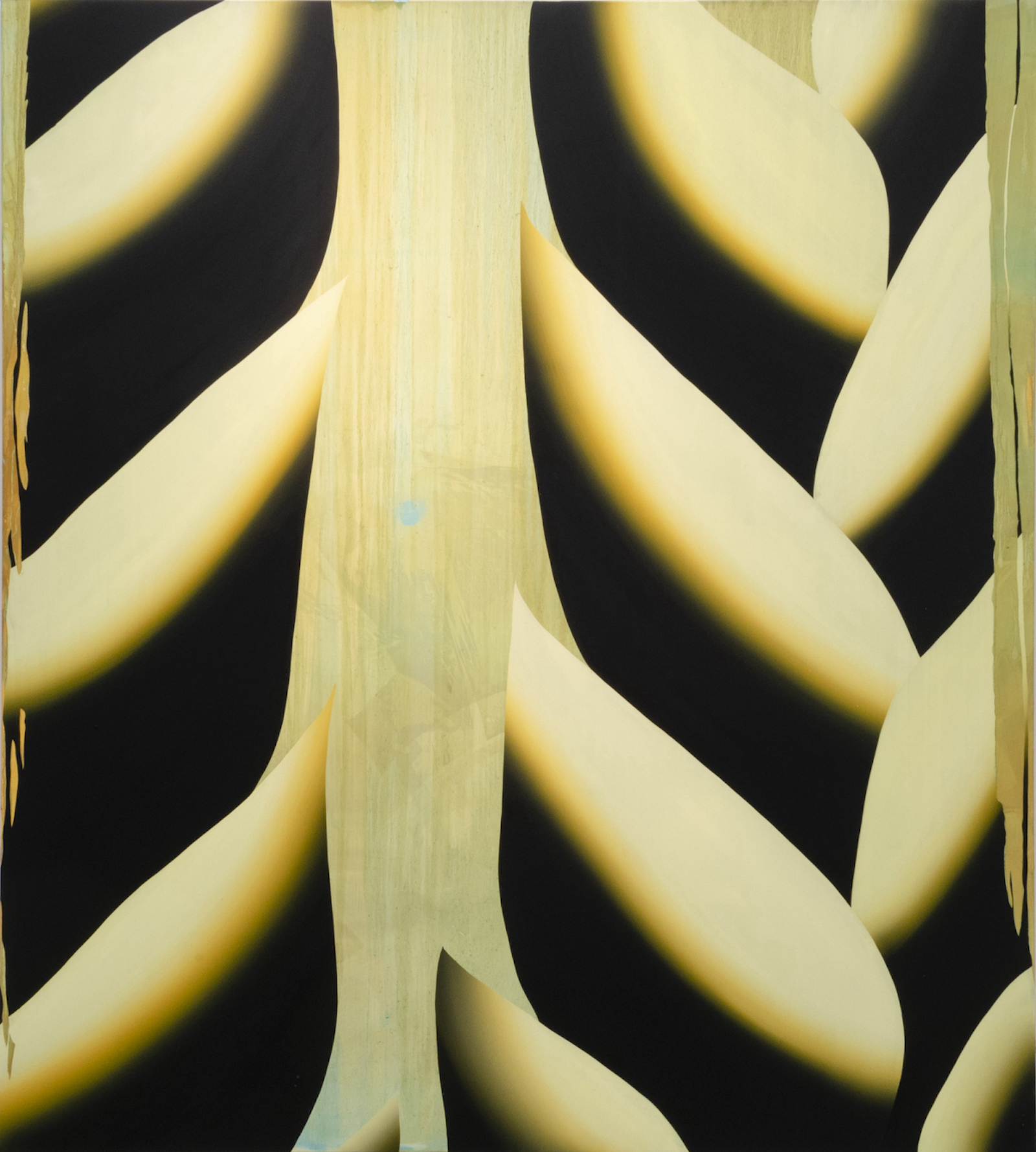
195 x 1175cm
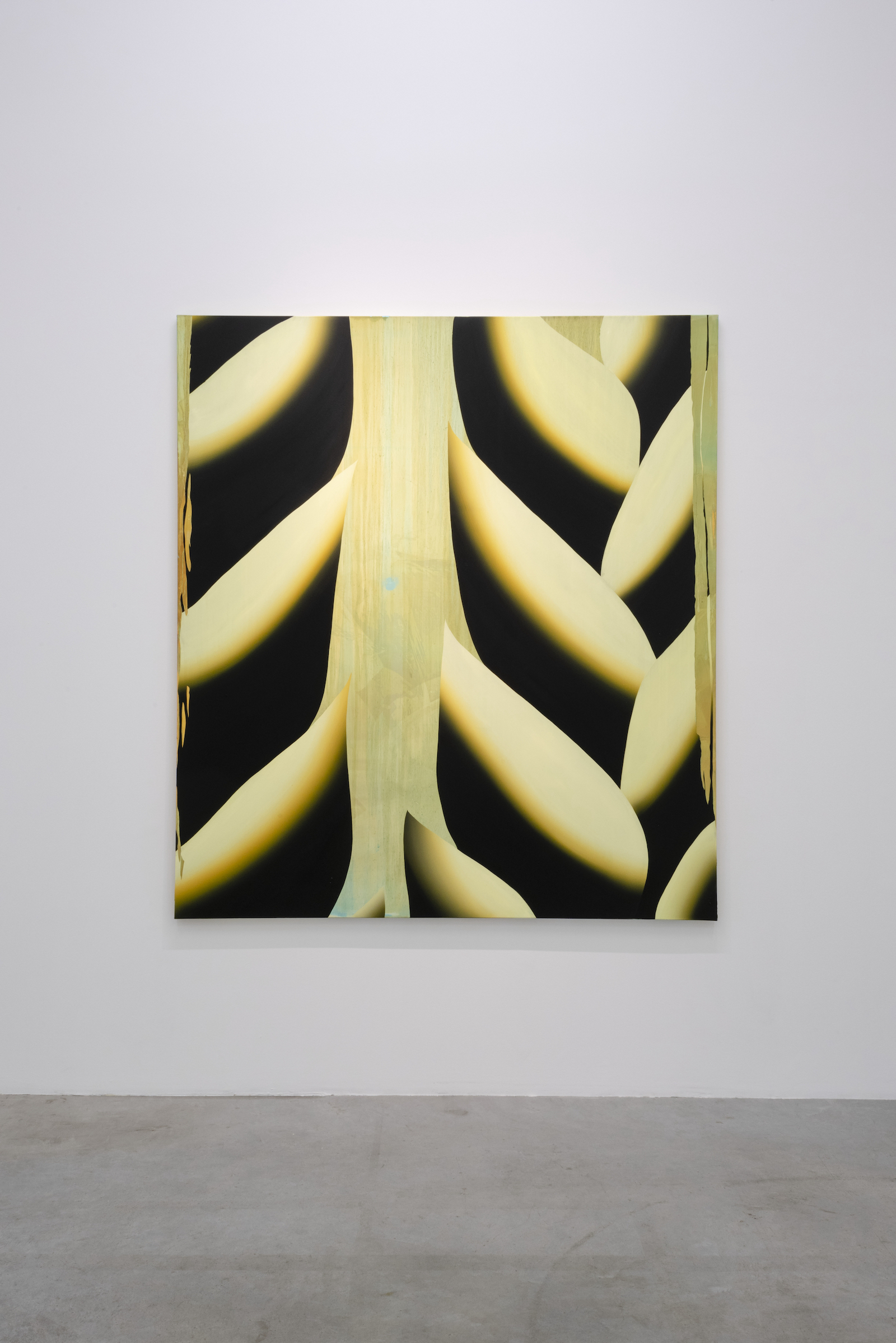
195 x 1175cm
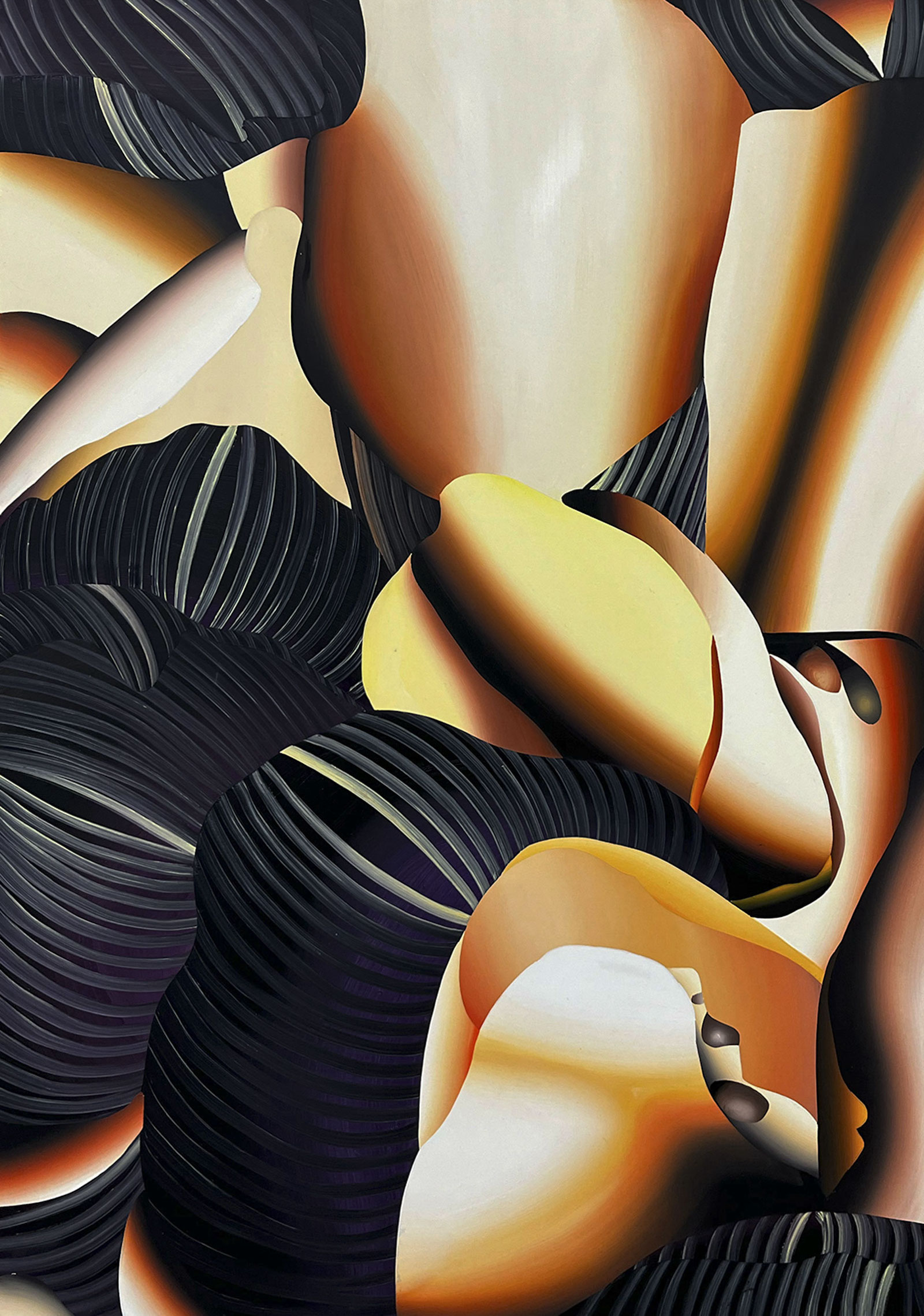
100 x 70 cm
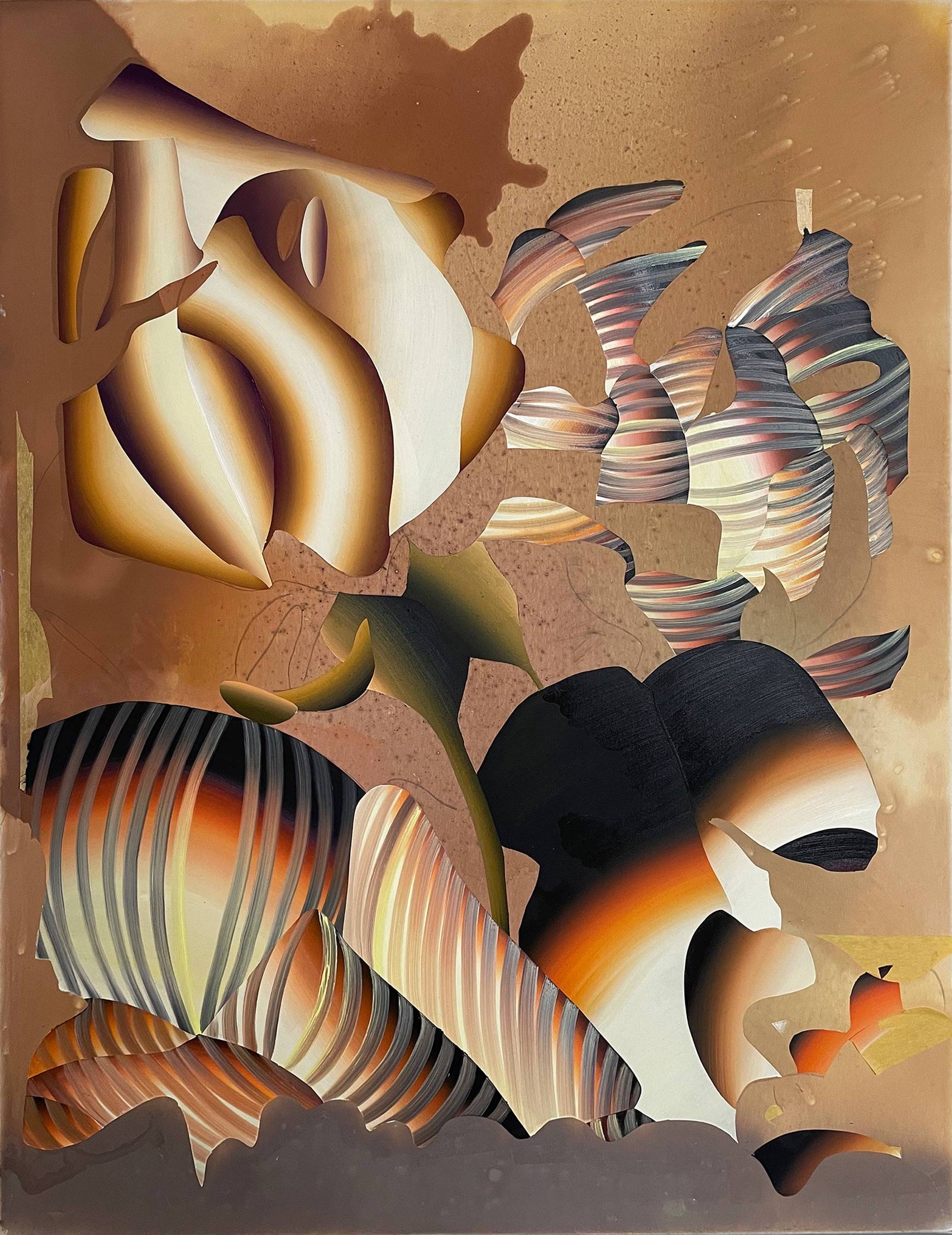
92 x 68 cm
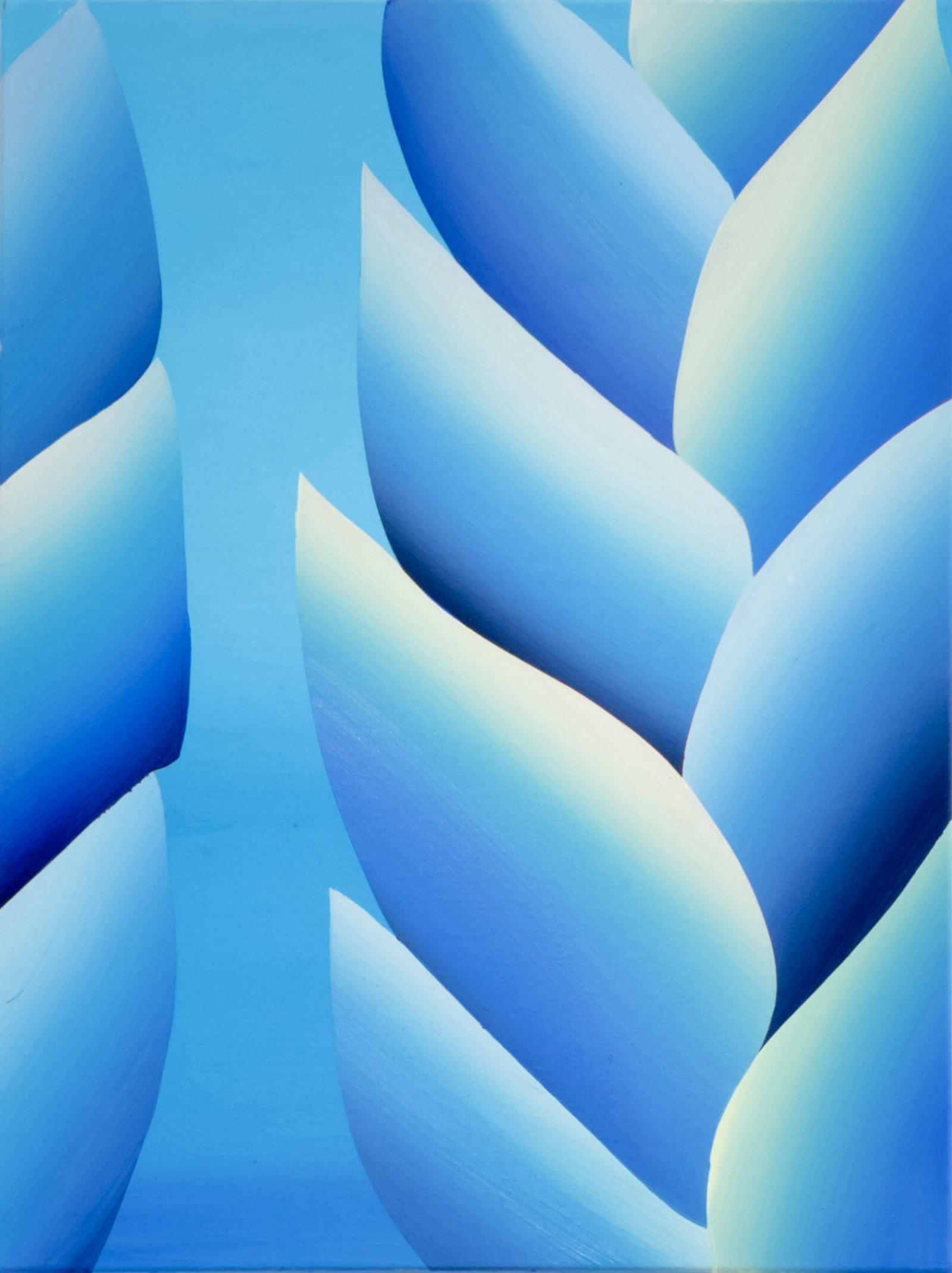
30 x 40 cm
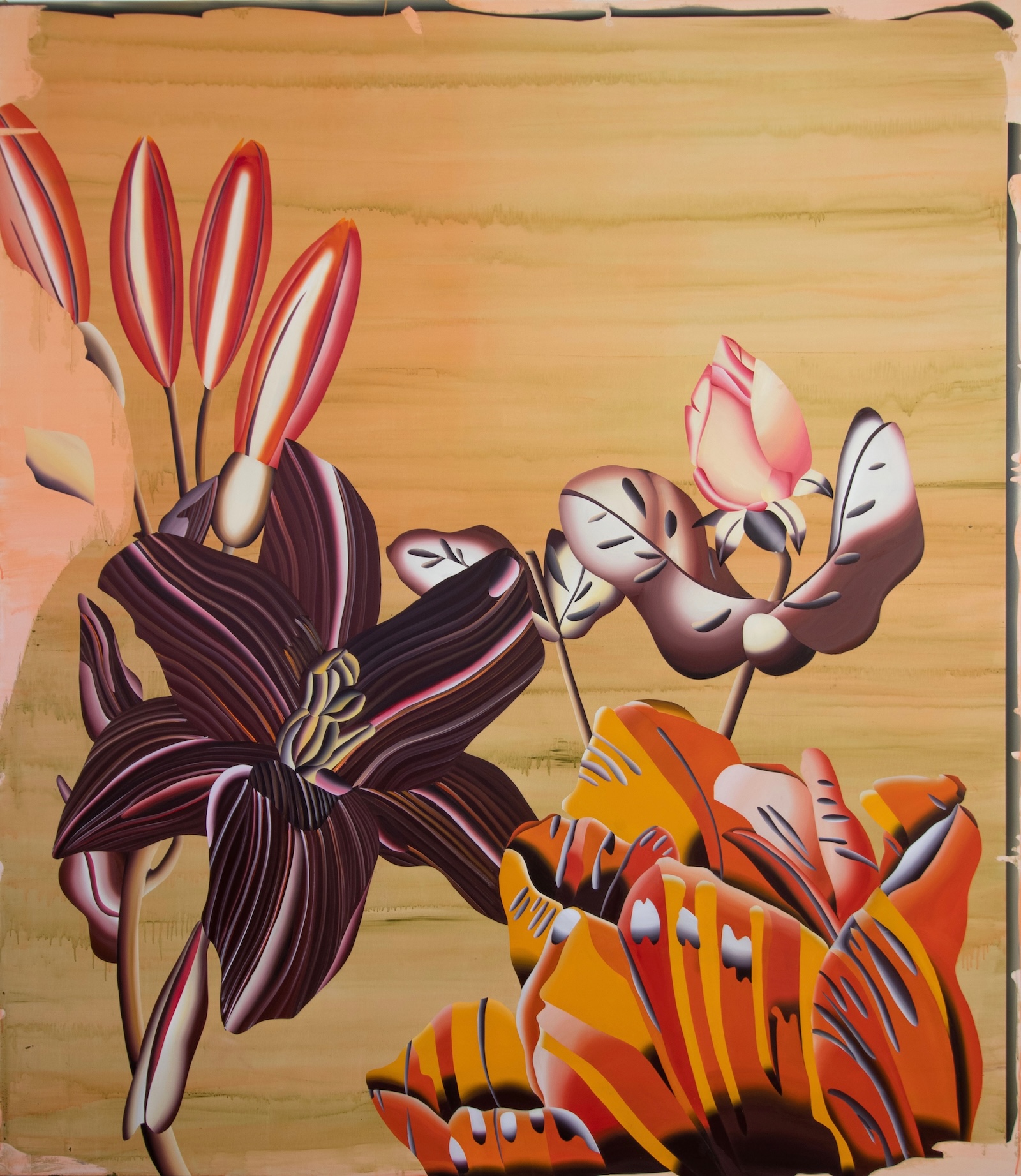
195 x 175 cm
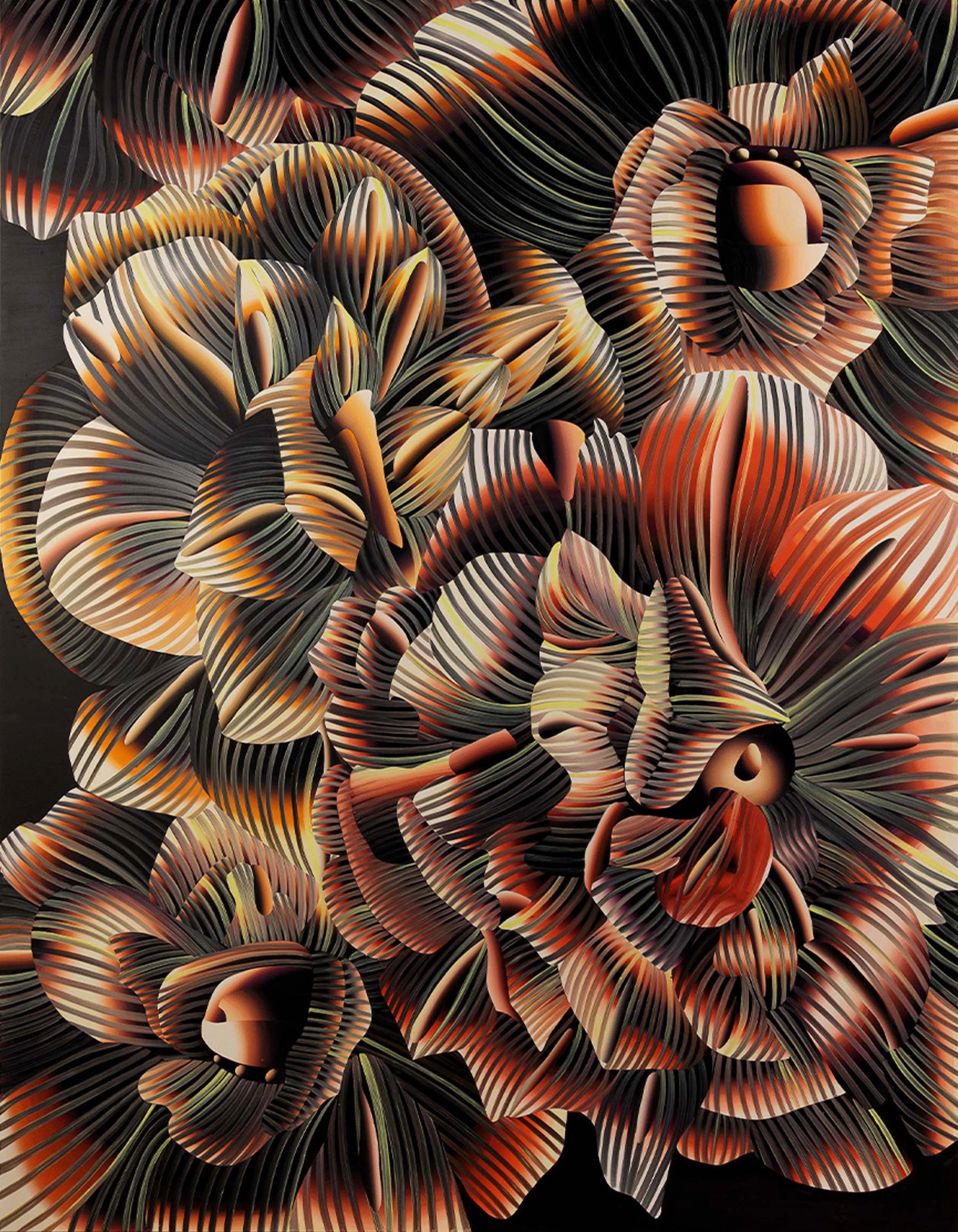
180 x 140 cm
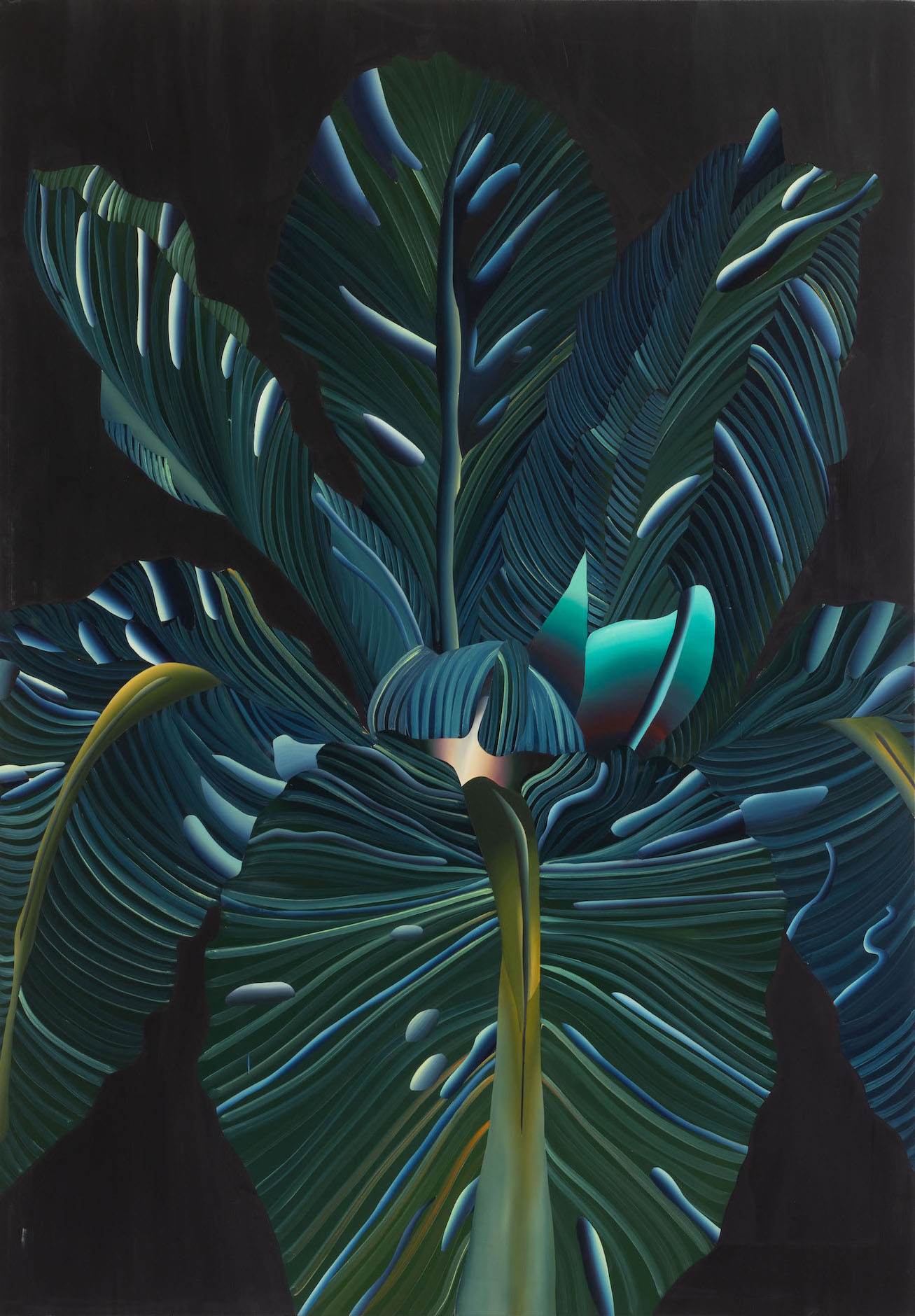
162 x 114 cm

162 x 114cm
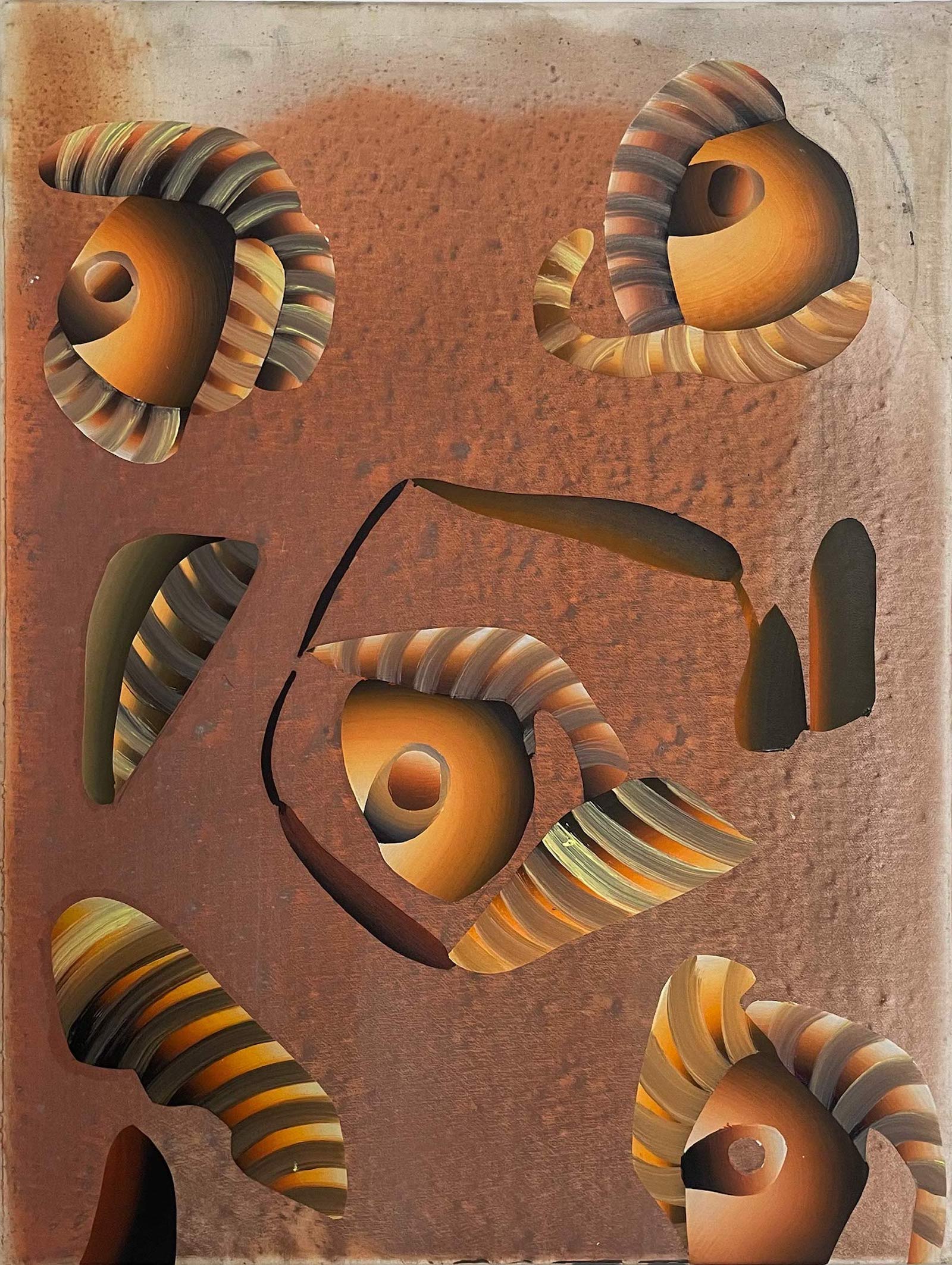
40 x 30 cm
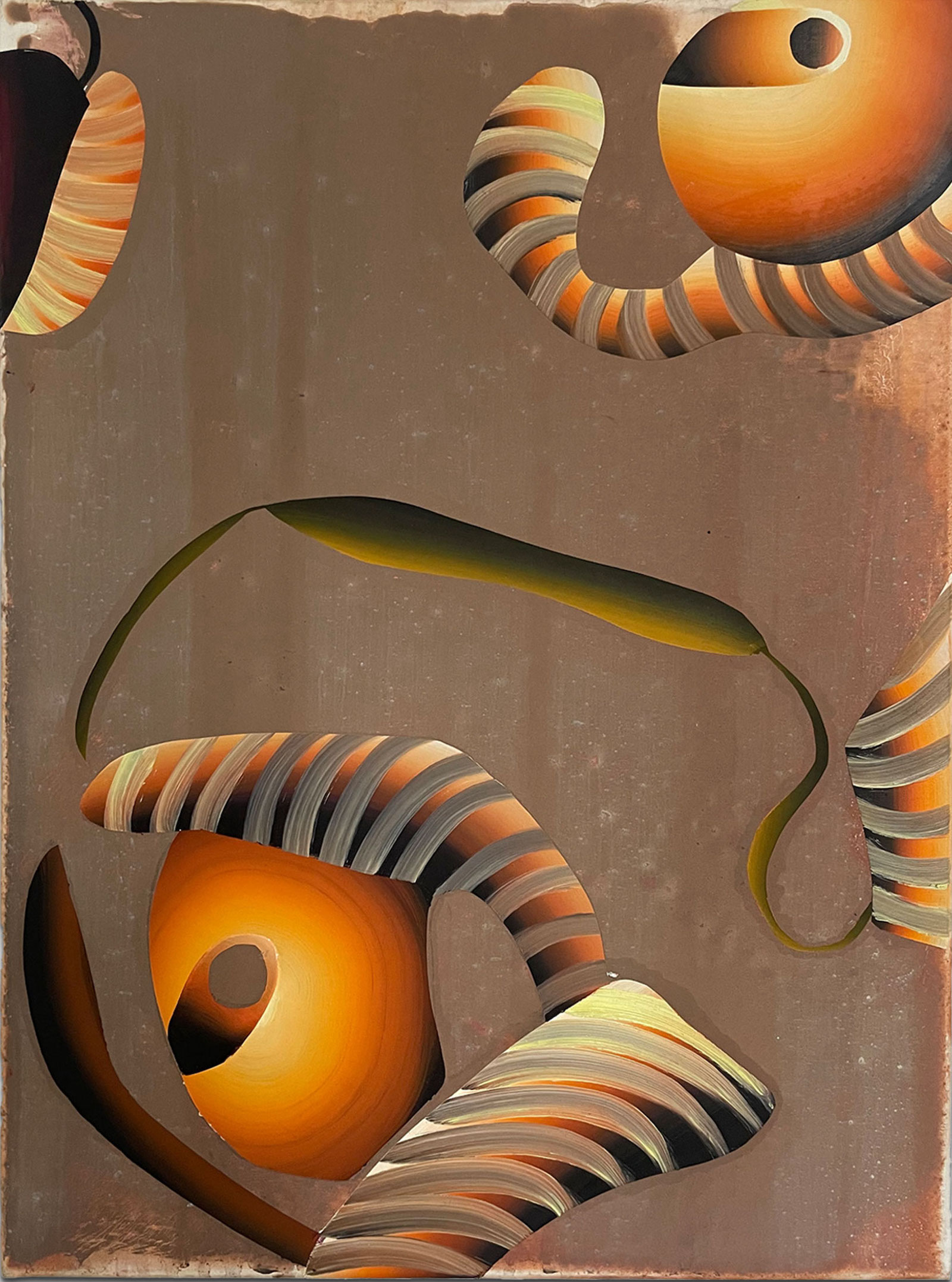
40 x 30 cm

195 x 170 cm
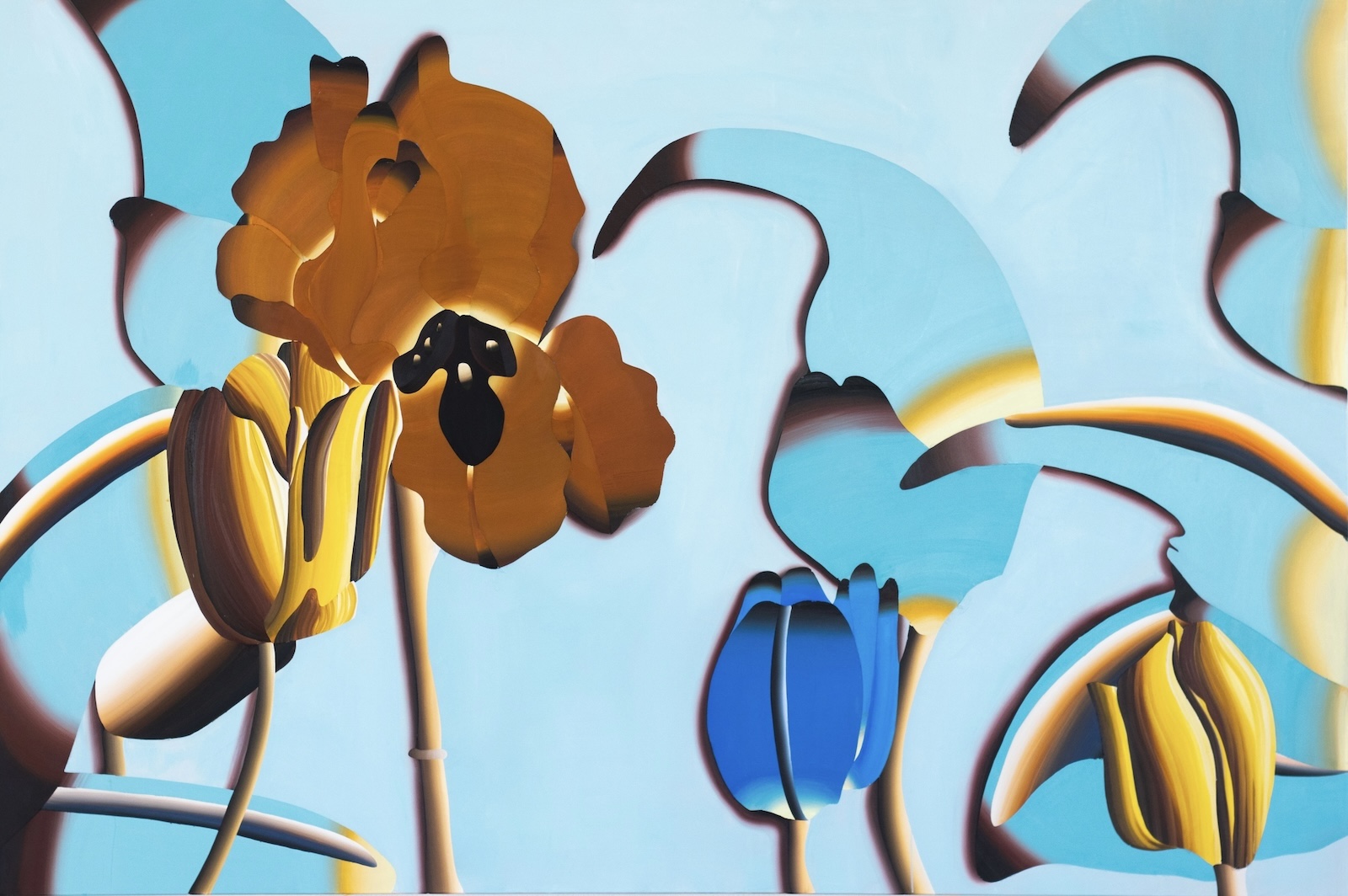
114 x 162 cm
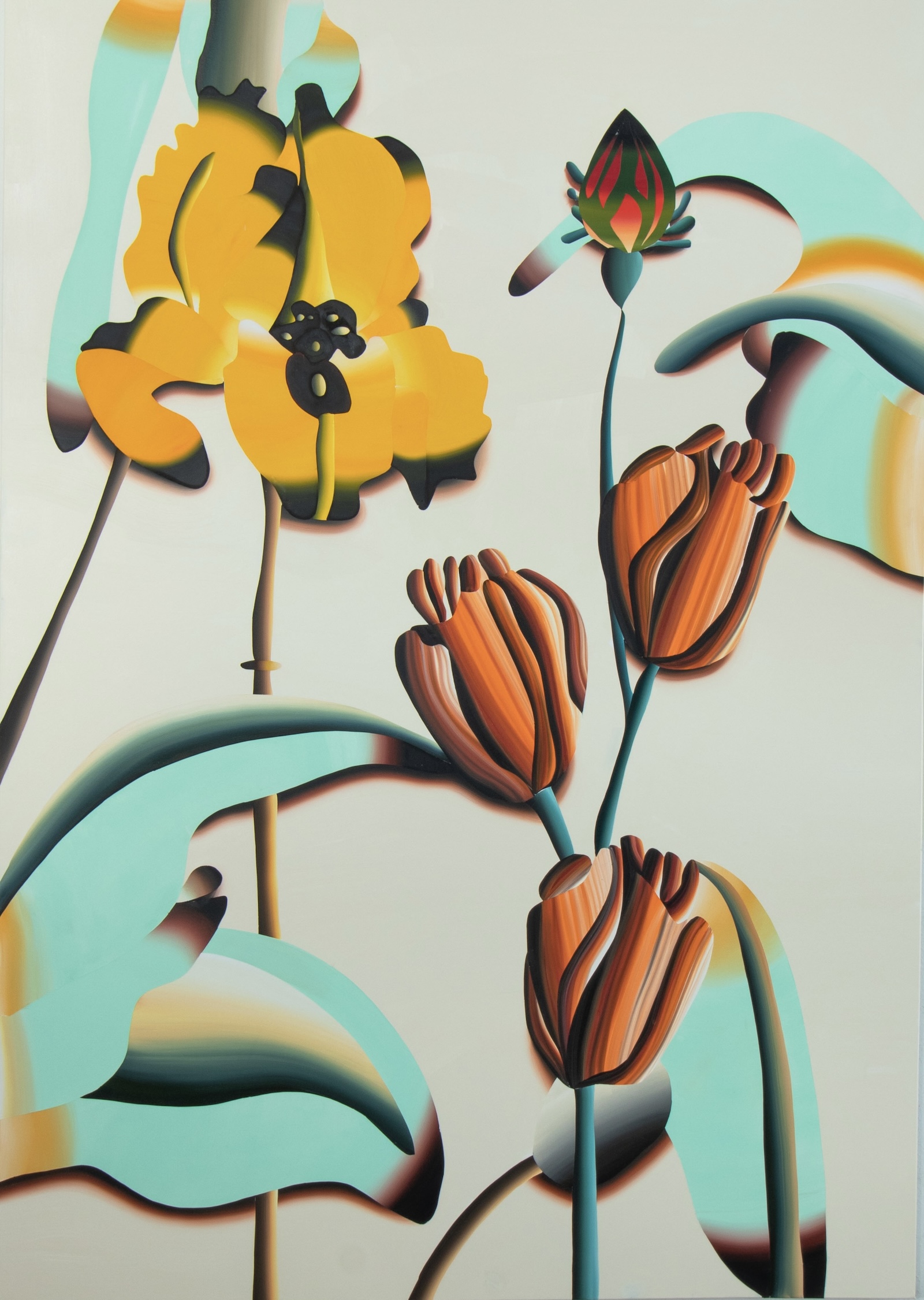
162 x 114 cm

162 x 114cm
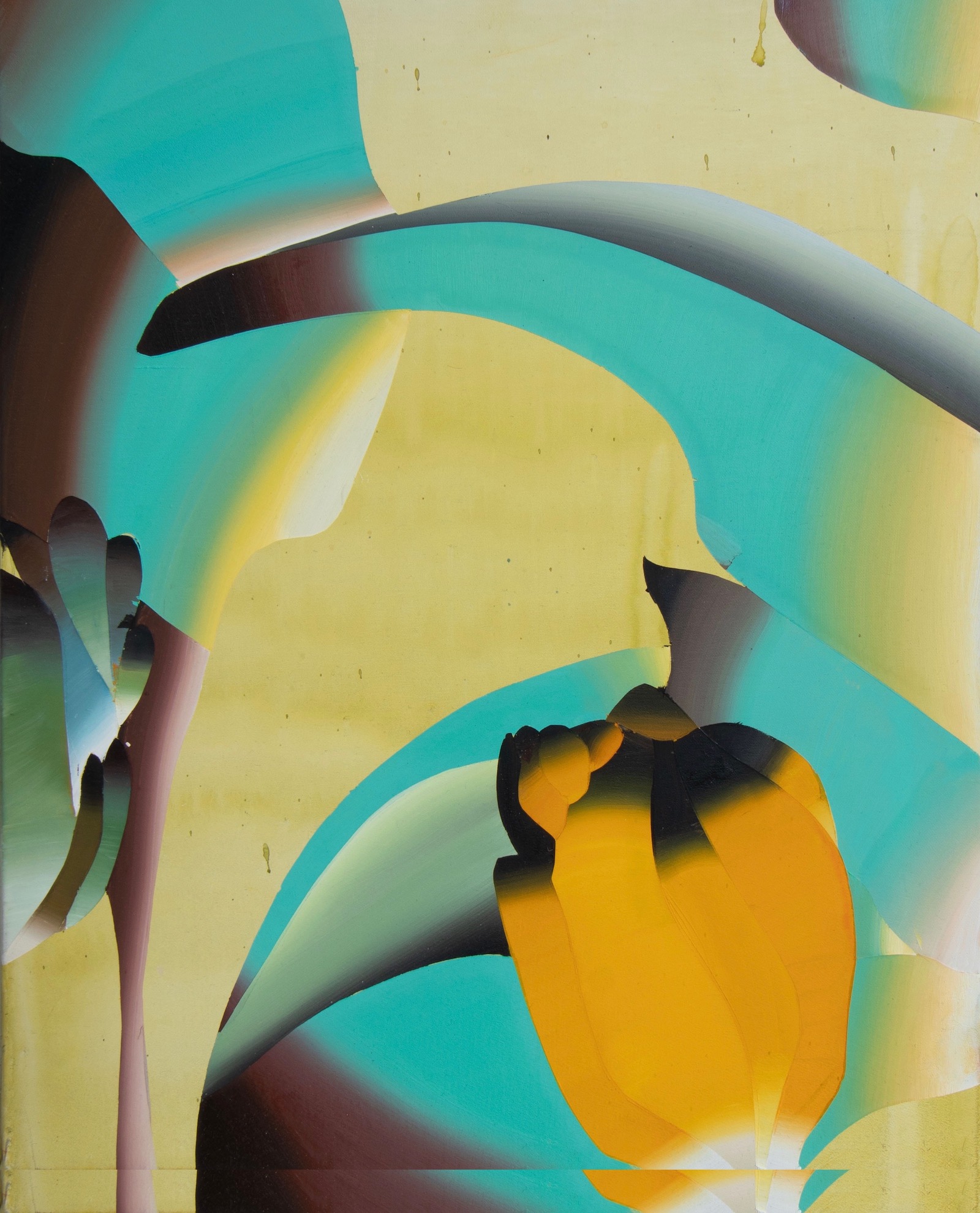
41 x 33cm
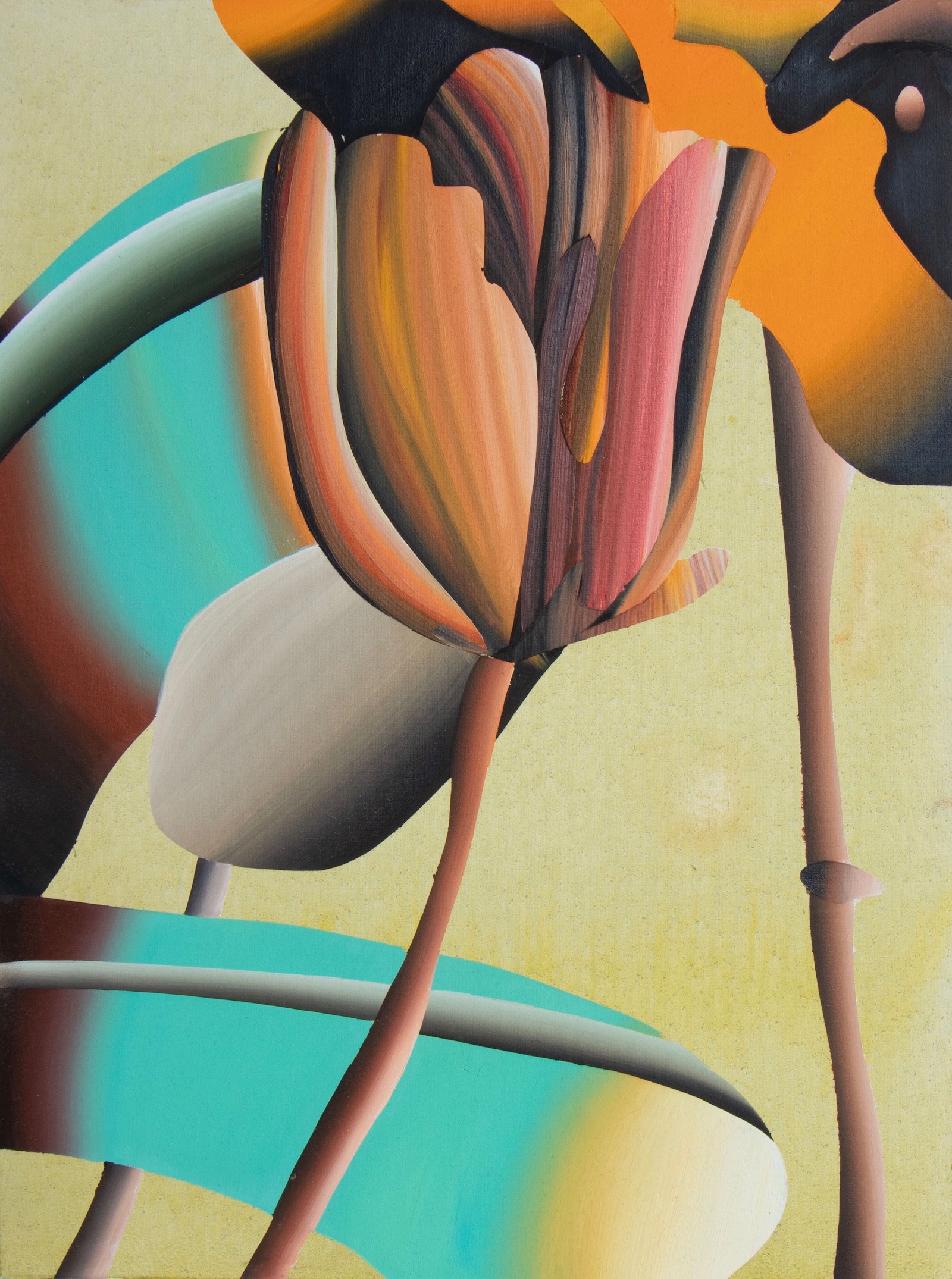
41 x 33 cm
Signed and dated at the back
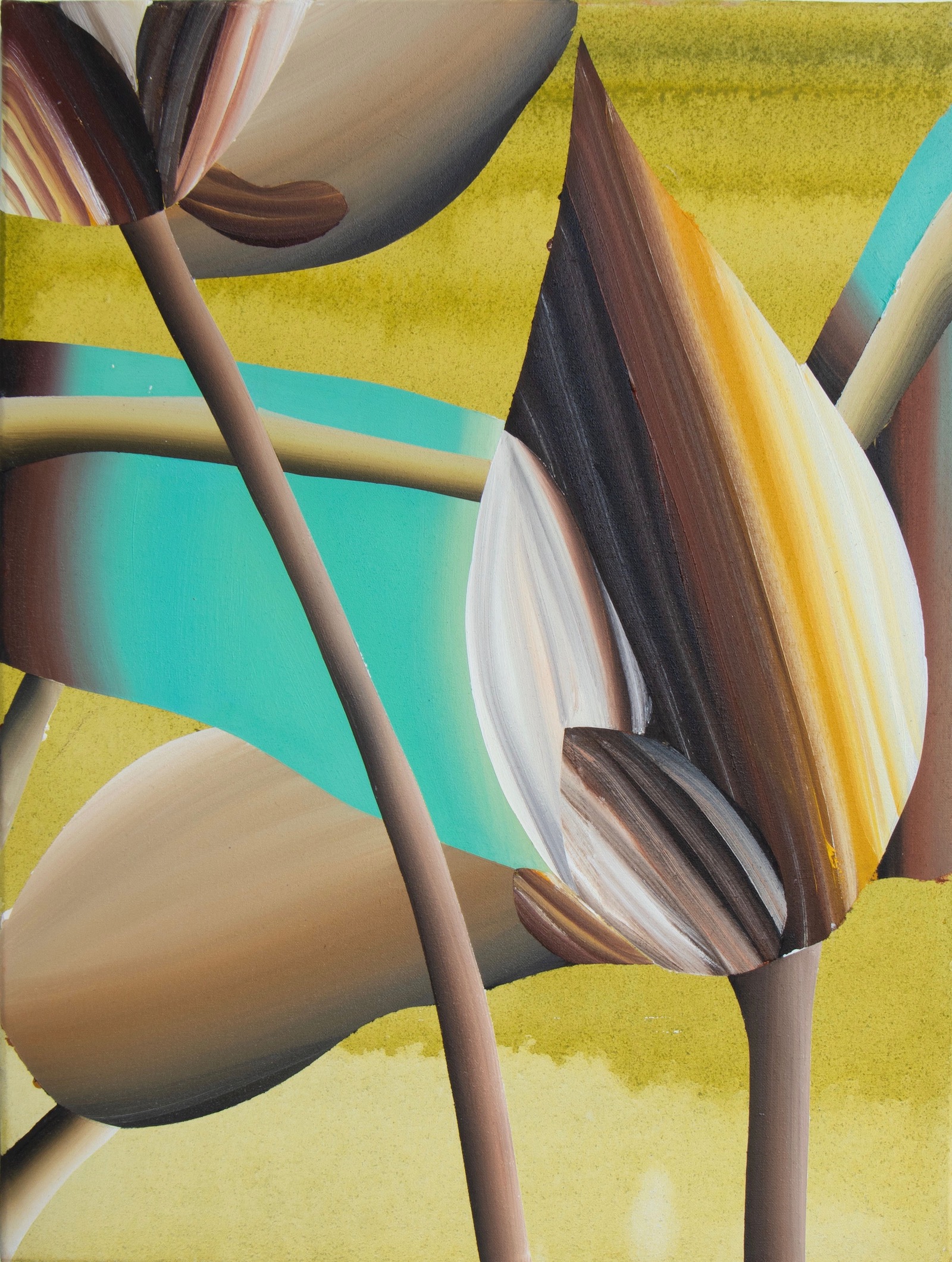
40 x 30 cm
Laura Garcia-Karras, born in 1988, is a painter whose work explores the boundaries of pictorial matter and the relationship between representation and nature. After studying at the La Cambre school in Brussels and the Beaux-Arts of Paris, she was honoured by the Crédit Agricole Foundation and was awarded the Prix Antoine Marin in 2018. Currently resident at Poush Manifesto in Aubervilliers, in 2024 she presented a solo exhibition at Mo.Co. Montpellier Contemporain.
Her work, focused on painting, questions the materiality of the medium through processes that blend figuration and abstraction. Her exploration of plant motifs, particularly flowers, goes beyond simple aesthetic representation to transcend their symbolism. For her, painting becomes a space for reflection, both poetic and philosophical. Using techniques that combine clean surfaces and free brushstrokes, she creates compositions that play with light and depth, superimposing scalpel-cut shapes and flat areas of colour.